True to its name, Morris Heights rises steeply from the banks of the Harlem River, climbing past Roberto Clemente State Park and the River Park Towers, the borough’s tallest buildings, before sloping down again toward Jerome Avenue, the neighborhood’s eastern edge, where a nearly uninterrupted row of muffler and auto body shops lines the street. The constant exhortations of the auto body shop touts, experts at spotting even the smallest of dents and promising a fix, compete with the hiss and clatter from the overhead 4 trains that cast constantly shifting shadows on the pavement below. The neighborhood’s other boundaries are Burnside Avenue to the north and the Cross-Bronx Expressway to the south.
Like adjacent University Heights and Highbridge, the neighborhood is striated by a succession of step streets, the connective tissue that makes navigating the formidable inclines of the West Bronx a little bit easier.
While the step streets are an iconic Bronx feature, the neighborhood's most famous landmark is the dimly lit community center on the ground floor of 1520 Sedgwick Avenue, a 102-unit apartment building that, to some people at least, is considered the birthplace of hip hop.
A GALAXY OF CITY BEAUTY
Roughly three hundred years before DJ Kool Herc made history with two turntables, Welsh sea captain Richard Morris purchased a large section of Jonas Bronck’s former farm in the southern Bronx. That land would eventually grow into a 2,000-acre estate known as the Manor of Morrisania. The Morris lineage would go on to include signers of the Declaration of Independence, framers of the Constitution, federal judges, and even the era’s most accomplished lunar photographer.
By the 19th century, apparently not satisfied with their sprawling domain, the Morris family acquired additional land just north of Morrisania. There, brothers Lewis and Fordham Morris settled on the high ground that would later be called Morris Heights.
While living in Morris Heights, Lewis became known for his cattle-breeding prowess and, on June 24th, 1856, presented to the public what was billed as "the finest catalogue of pure bred animals ever offered at a single sale in this country." Unfortunately for Lewis, according to a pitying write-up in the New York Times, the event didn’t go as planned, as “the picturesque beauty of his lands and residence attracted and delighted many ladies," whose presence proved too distracting for the men to conduct business.
We have no hesitation in saying (and we say it boldly,) that gentlemen farmers from Pennsylvania, and Ohio, and Michigan, and Vermont, and Massachusetts, and Canada West, can't attend to business in the presence of a score or more of the pretty women of New-York. They get nervous-their mind is distracted, and while they are halting between calculating the value of a pure breed, and admiring the ladies in their carriages wear by, down goes the bull to somebody else at half his value.
That empathy was short-lived, as later in the same paragraph, the Times, with more than a hint of cosmopolitan snobbery, writes that Morris "has more money than he knows what to do with, and it's worth a whole herd of Devons to witness the effect of a galaxy of City beauty upon our sensitive brethren from the country."
YACHT LIFE
In 1866, a train station opened on the banks of the Harlem River, and industry soon followed, most notably a shipyard founded by the Gas Engine & Power Company, known for their cutting-edge, naphtha-powered launches.
These smaller, relatively affordable vessels helped kick off North America’s pleasure boating culture. Conveniently, the small boats also served the wealthy yacht owners who needed transportation to reach their larger vessels moored in deeper water offshore.
The industry's foothold in Morris Heights strengthened in 1896 when Gas Engine & Power merged with the prestigious Charles L. Seabury Company, known for its steam yacht construction. Despite its objectively horrible name, the "Gas Engine and Power Company & Charles L. Seabury Company" cornered the nascent recreational boating market.
In 1908, the world's largest motor-driven yacht, the Jemima F. III, was launched from the Morris Heights shipyard. Commissioned by Charles Henry Fletcher, the laxative king, the 111-foot-long vessel had five staterooms, “roomy brass beds,” and, of course, several bathrooms. Its interiors were clad in San Domingo mahogany, and its exteriors and decks were made from the finest Burmese teak. Naval engineers hailed it as a marvel of modern engineering.
Up until recently, the “world’s largest yacht” title was held by the Azzam, built in 2013 for Sheikh Khalifa bin Zayed Al Nahyan, President of the UAE and ruler of Abu Dhabi. It dwarfed Fletcher’s boat by nearly 480 feet and featured a gym, a golf training facility, and so much mother-of-pearl marquetry that artisans reportedly used an entire year’s global supply of the material.
SPLINTERS AND EELS
Barring the occasional crack of a cricket bat or sharp report of a shotgun from the pigeon-shooting matches at the prestigious Berkeley Oval Club, Morris Heights—at least away from the shipyard—remained a relatively quiet place.
For weeks, the discovery of a three-foot-long, seven-inch-wide eel blocking the village water main was the talk of the town. Once the town plumber had wrestled the creature free, he brought it back to his shop, submerged it in a jar of alcohol, and put it on display in the store window with a handwritten sign touting the extraction.
Other big news included the tragic demise of 46-year-old William Jones, a resident of Undercliff Avenue and Sedgwick, who died from a splinter.
It wasn’t to stay quiet for long, though. The Bronx’s annexation by the city in 1874 had laid the groundwork for Morris Heights’ inevitable transformation, and soon, lots were being sold and parceled out to accommodate the influx of Manhattanites making the trip north.
By the 1920s, Morris Heights saw an influx of Irish and Jewish families, many of whom moved into newly constructed five- and six-story apartment buildings lining University Avenue, the neighborhood’s main artery.
The Birthplace of Hip Hop
Morris Heights wasn’t immune to the white flight and economic disinvestment that plagued much of the Bronx during the 1970s. By the end of the decade, the fires that had ravaged adjacent neighborhoods like Morrisania, Crotona Park East, and Hunts Point had run out of fuel and moved west. In just over ten years, a combination of arson, city mismanagement, and willful neglect reduced the South Bronx’s housing stock by an estimated 80%.
And yet, despite this devastation, or maybe, in some ways, because of it, a new cultural movement began to rise from the rubble. This map from Nonstop Metropolis: A New York City Atlas by Rebecca Solnit and Joshua Jelly-Schapiro overlays the Bronx neighborhoods most devastated by fire (with darker red indicating a higher percentage of lost homes) against sites pivotal to the birth of hip hop.
Number 7 on that map marks 1520 Sedgwick Avenue: an unassuming 18-story brick apartment building on the western edge of Morris Heights, just a few hundred yards from Robert Moses’s Cross Bronx Expressway, the mammoth infrastructure project often blamed for accelerating the borough’s decline.
On August 11, 1973, in the building’s ground-floor community room, 16-year-old Cindy Campbell threw a back-to-school party to raise money for new clothes. Admission was 25 cents for girls, 50 cents for boys.
She put her older brother, Clive, better known as DJ Kool Herc, in charge of the music. That night, Herc unveiled his pioneering Merry Go Round technique.
Working with two turntables and often duplicate copies of the same record (with the labels deliberately soaked off to guard his secrets), he isolated the breakbeat, the drum-heavy instrumental section that formed the rhythmic core of a song. By deftly switching between these breaks, what he called “the get down part,” he created continuous loops of pure rhythm, creating the foundational sound of hip hop.
Of course, the birth of hip hop can’t be credited to a single person, party, or technique. Two other Bronxites, Afrika Bambaataa and Grandmaster Flash (whose park jams in the playground of PS63 on Morrisania I’ve written about before) are often mentioned in the same breath as Kool Herc when talking about the “godfathers” of hip hop DJing. The simultaneous emergence of MCing, breakdancing, and graffiti writing all contributed to what would become the most influential and popular cultural movement in the US.
SIGHTS AND SOUNDS
This week’s field recording is a jumble of sounds from the elevated train to the bells of the icee vendors and the ever-present whine of the sidewalk motorcyclists.
FEATURED PHOTOGRAPHER
Larry Racioppo was born and raised in South Brooklyn. Racioppo, who received a Guggenheim Fellowship in photography in 1997 and a National Endowment for the Arts grant in 2006, worked as the official photographer for New York City's Department of Housing Preservation and Development (HPD) from 1989 to 2011. He was hired by HPD to document the city's rebuilding of distressed neighborhoods, from Bedford-Stuyvesant to Harlem to the South Bronx. These wonderful environmental portraits show the inhabitants (mostly kids) of Morris Heights' apartments from his first year working on the project. On the New York City Municipal Archives website, they are labeled as EARP follow-up, which I believe refers to HPD's Emergency Rental Assistance Program.
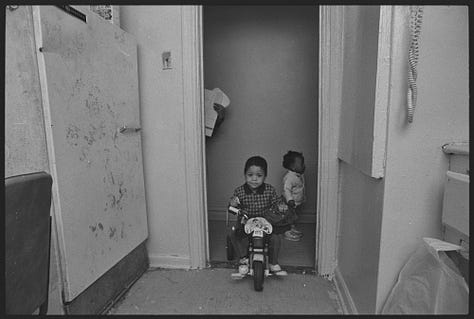
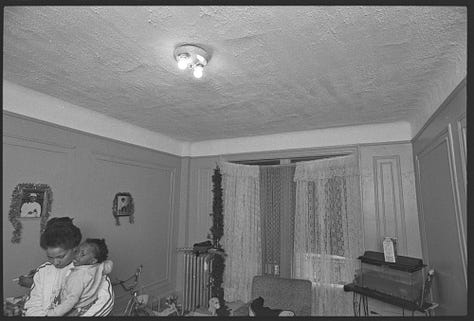

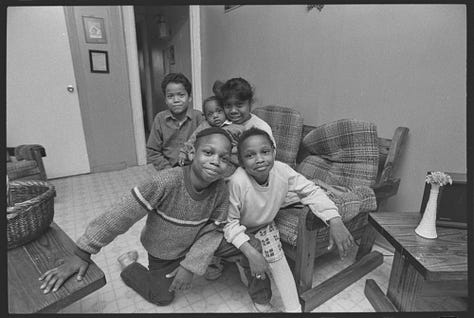
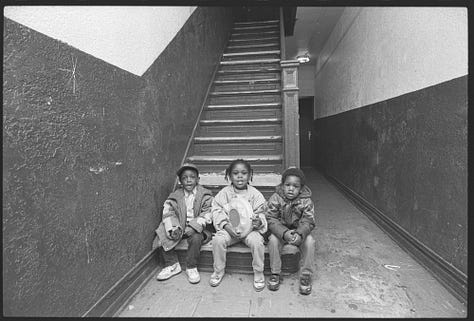
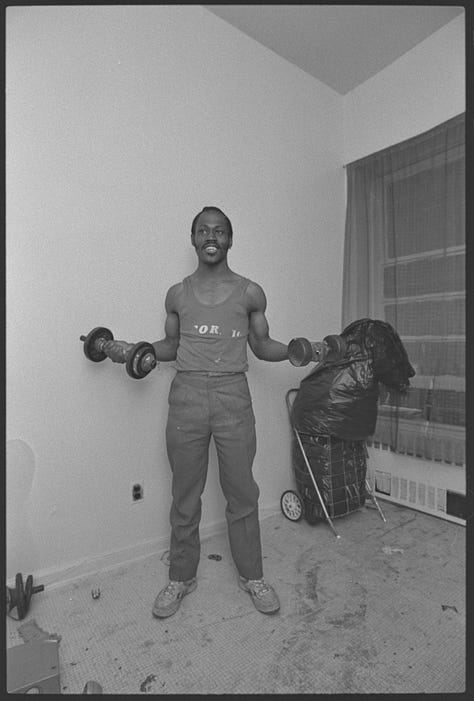
Larry is a true New York City photographer and his website is full of fantastic work. His latest book is I Hope I Break Even, I Could Use the Money, a collection of black and white photographs taken at Aqueduct Racetrack published by Blurring Books in 2024.
ODDS AND END
According to the Parks Department, there are four competing origin stories for Morris Heights' intriguingly named Featherbed Lane. The most popular is that, during the Revolutionary War, locals covered the street with feather beds so soldiers fighting the British could move quietly through the area. Then there are theories that have to do with the condition of the road. One states that the road was so rough that those who traveled needed to pad their carriage seats with featherbeds. Conversely, the other claims that it was so muddy and soft that traversing the road felt like riding on a featherbed. Finally, there is the theory that the name is a reference to the large number of prostitutes who plied their trade on the thoroughfare in the 1850s.
When reading an old New York Times article about the launch of the Laxative King’s superyacht in 1908, I couldn’t help but get distracted by the other headlines on the page.
Page 14 of the July 17th, 1908, edition turned out to be a treasure trove of early 20th-century clickbait. There was a story about the Gopher Gang shootout in Hell’s Kitchen, and a “Duel with Knives” in Williamsburg sparked by a political argument. But the headline that truly demanded my attention was this:
The story centers on Mrs. Mary Dwyer and Mrs. Helen Hedges, once best friends and Newark neighbors who had an unspecified falling-out. In a masterful stroke of trolling, Mrs. Dwyer decided to rename her dog Hedges. In the mornings, Mrs. Dwyer would call out to her pooch, “Come here, you, Mrs. Hedges,” causing her former bestie, great “mental anguish.” What really took the cake, however, was Mrs. Dwyer’s habit of standing in front of her neighbor’s house eating “ice cream, candy, and big homemade pies.” Mrs. Hedges, whose doctor forbade her from eating sweets, couldn’t take it anymore and brought her neighbor to court. In her statement to the judge, Mrs. Dwyer asserted her constitutional right to eat ice cream “when and where she pleases.”
Here are a couple of pictures from the 3walls booth at last week’s Future Fair. Big thanks to those of you who made it out to Chelsea to see the show!
And for those of you who made it this far, here’s the answer to last week’s Reclining Ladies of Greenpoint puzzler: In the middle, of course, is Pat Benatar. The swan bed is occupied by Mae West. And on the left is the author of the childhood classic Goodnight Moon—“the laureate of the nursery”—Margaret Wise Brown.





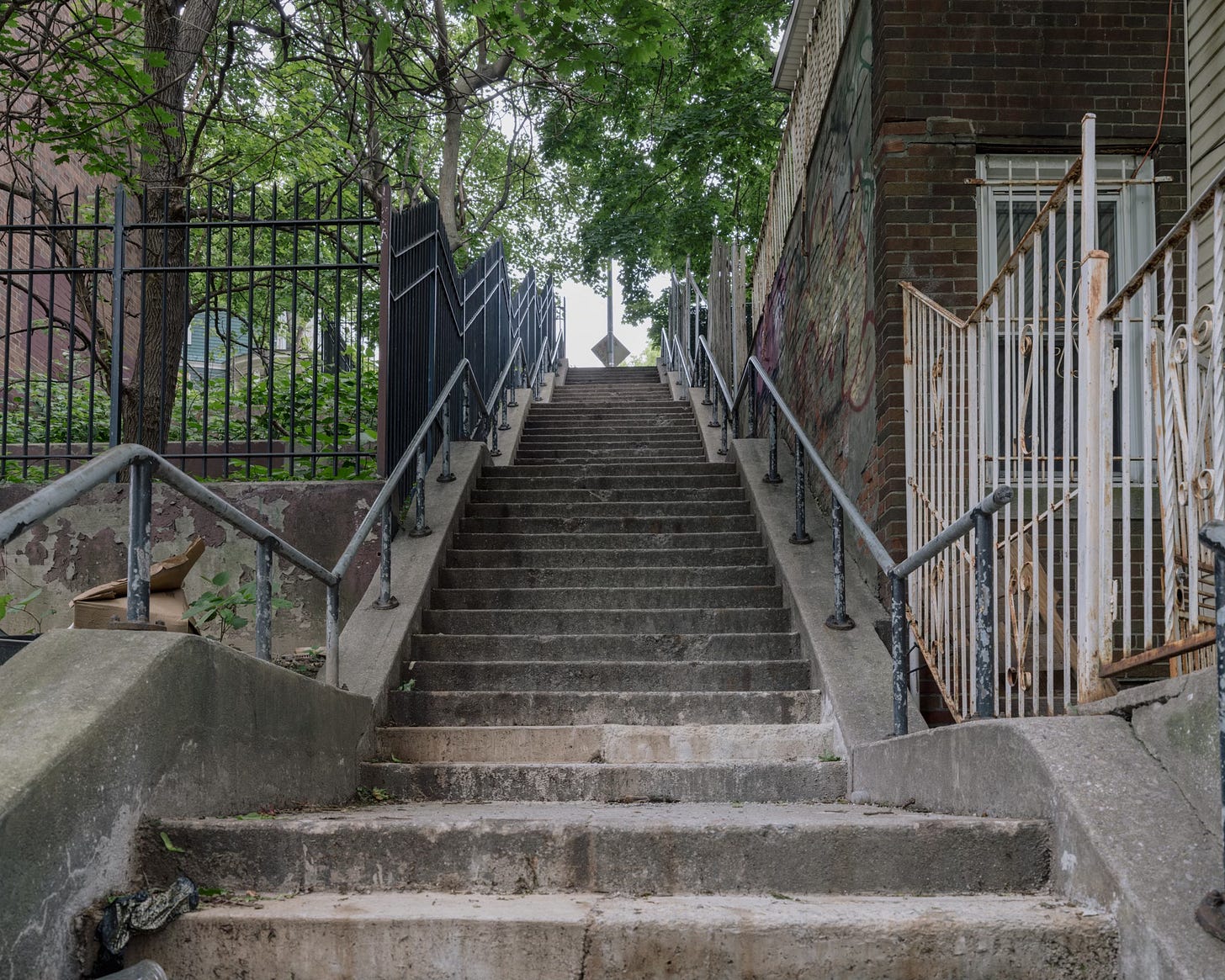
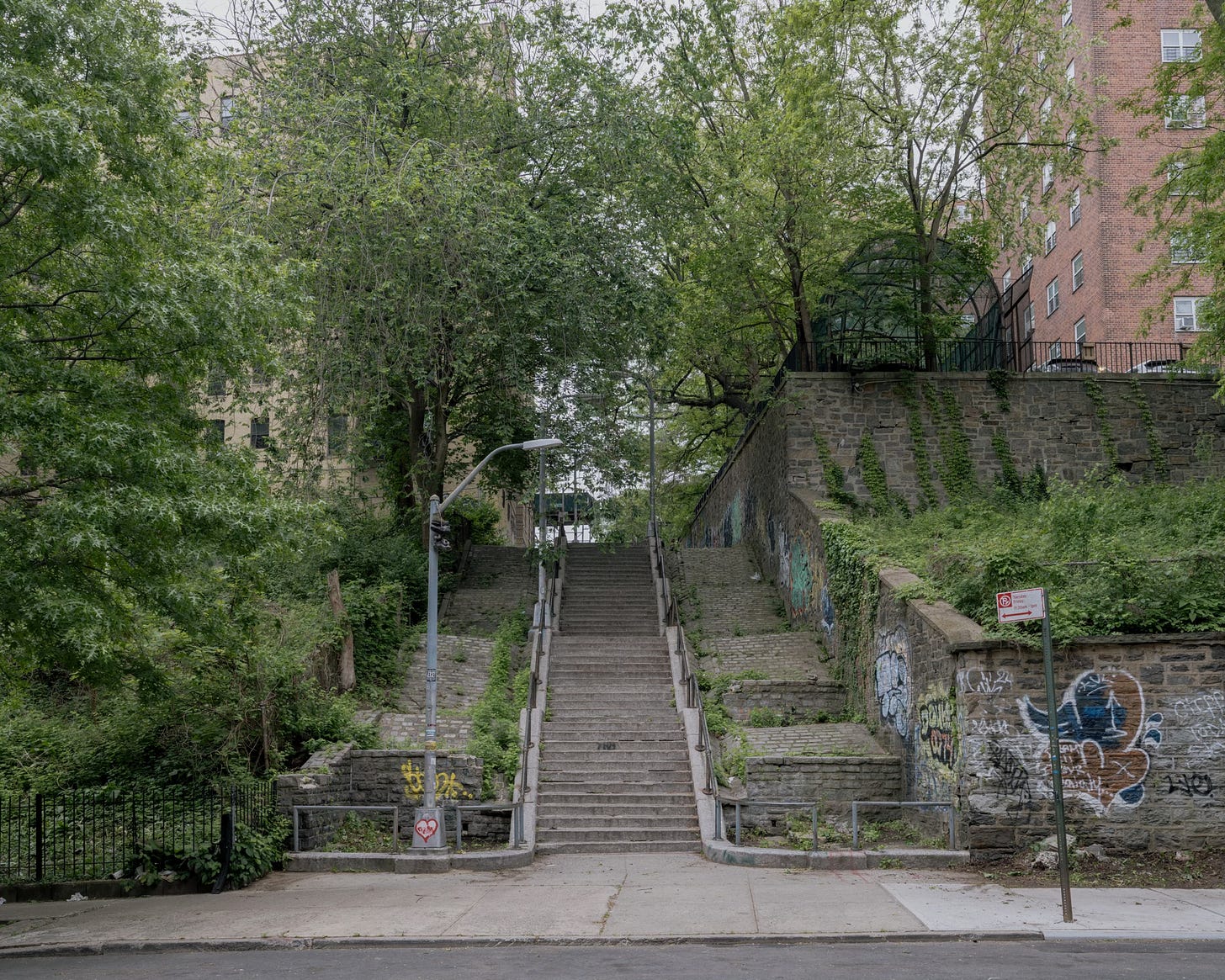

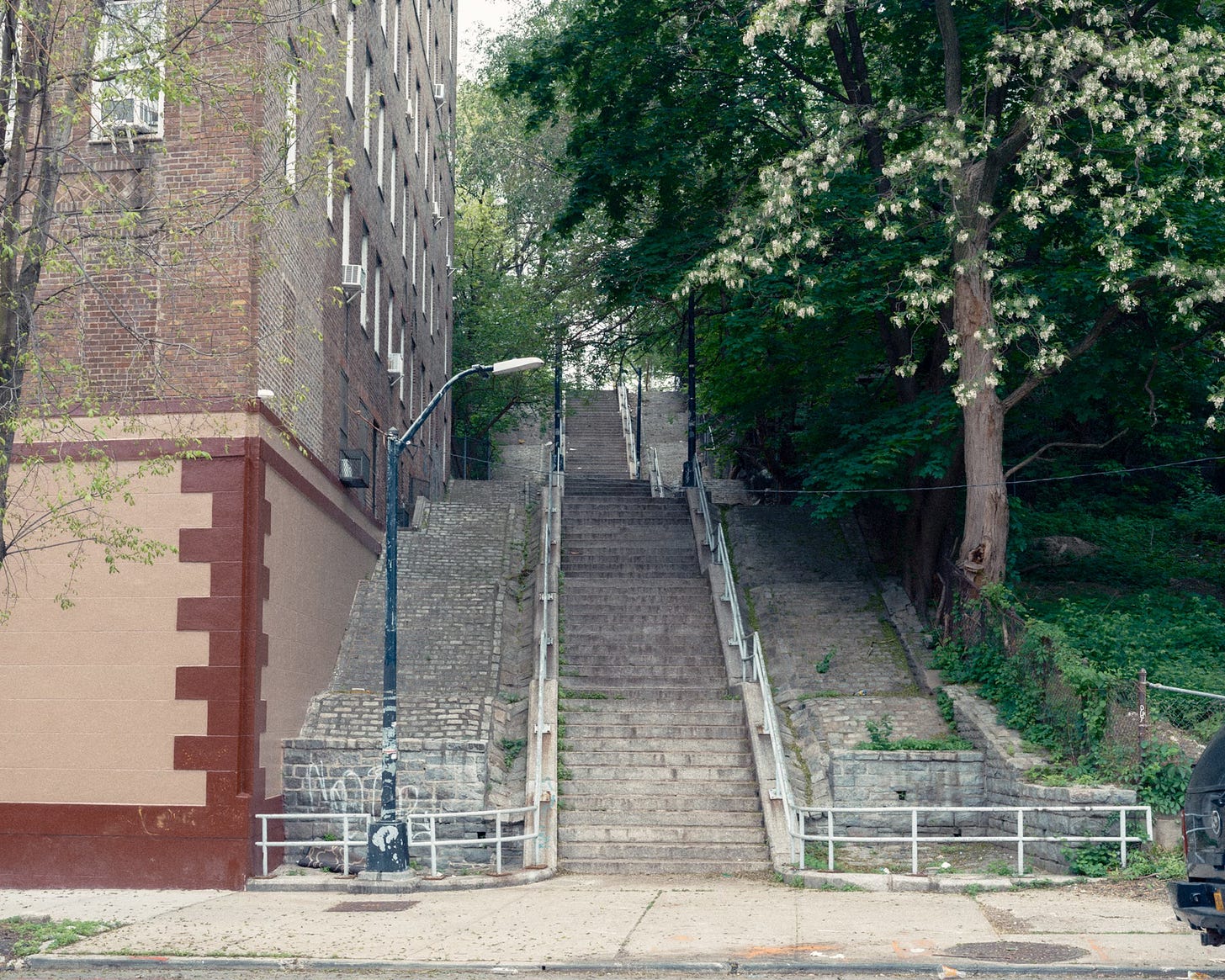
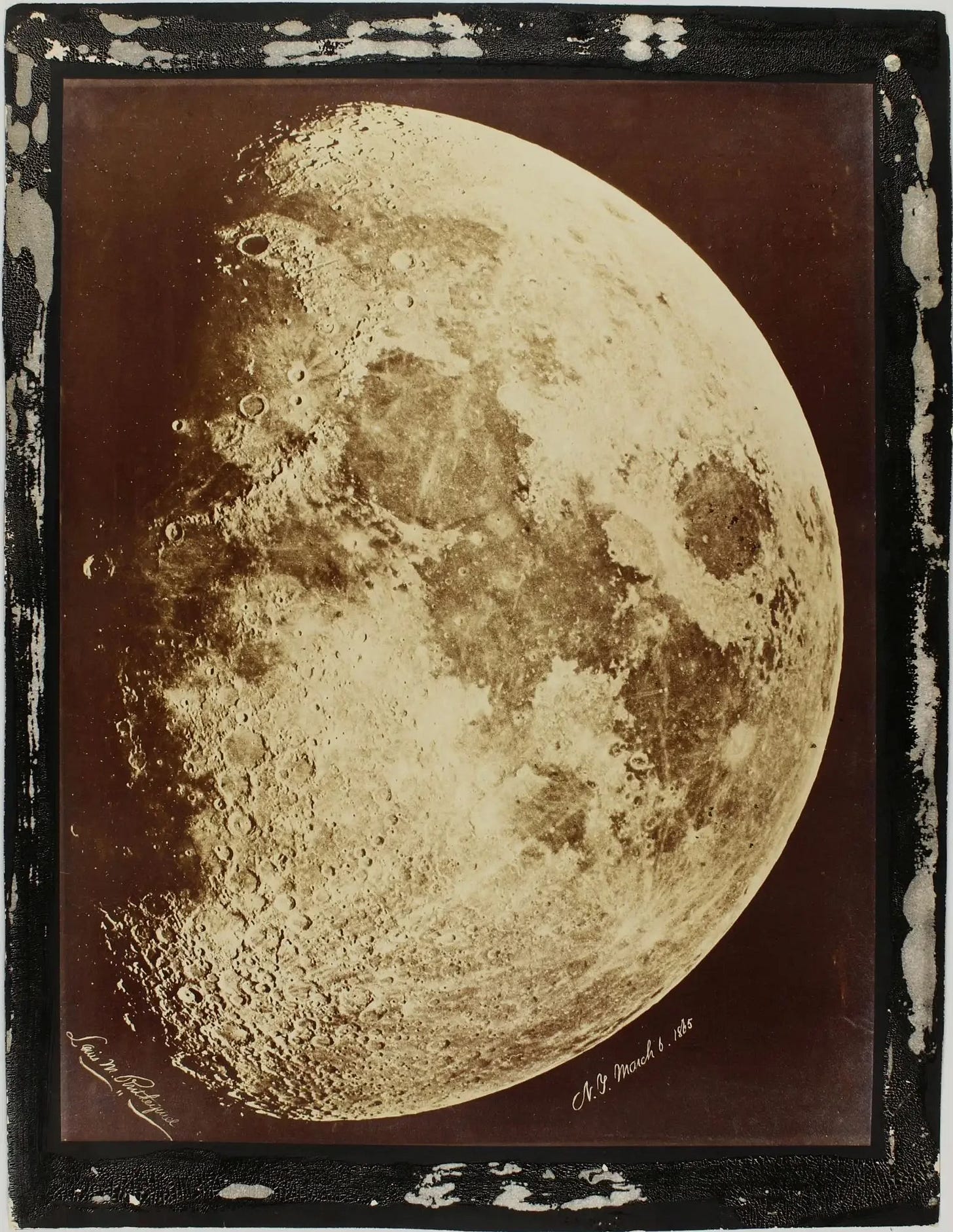

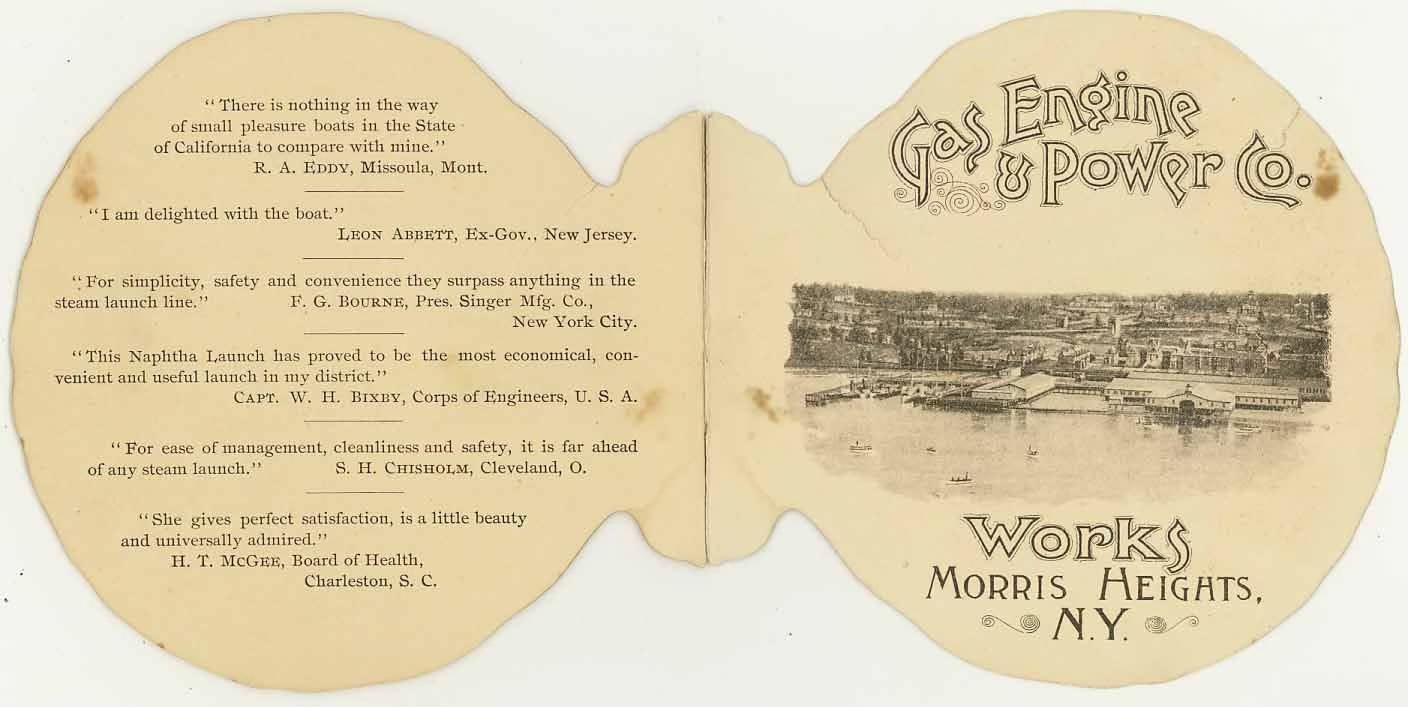



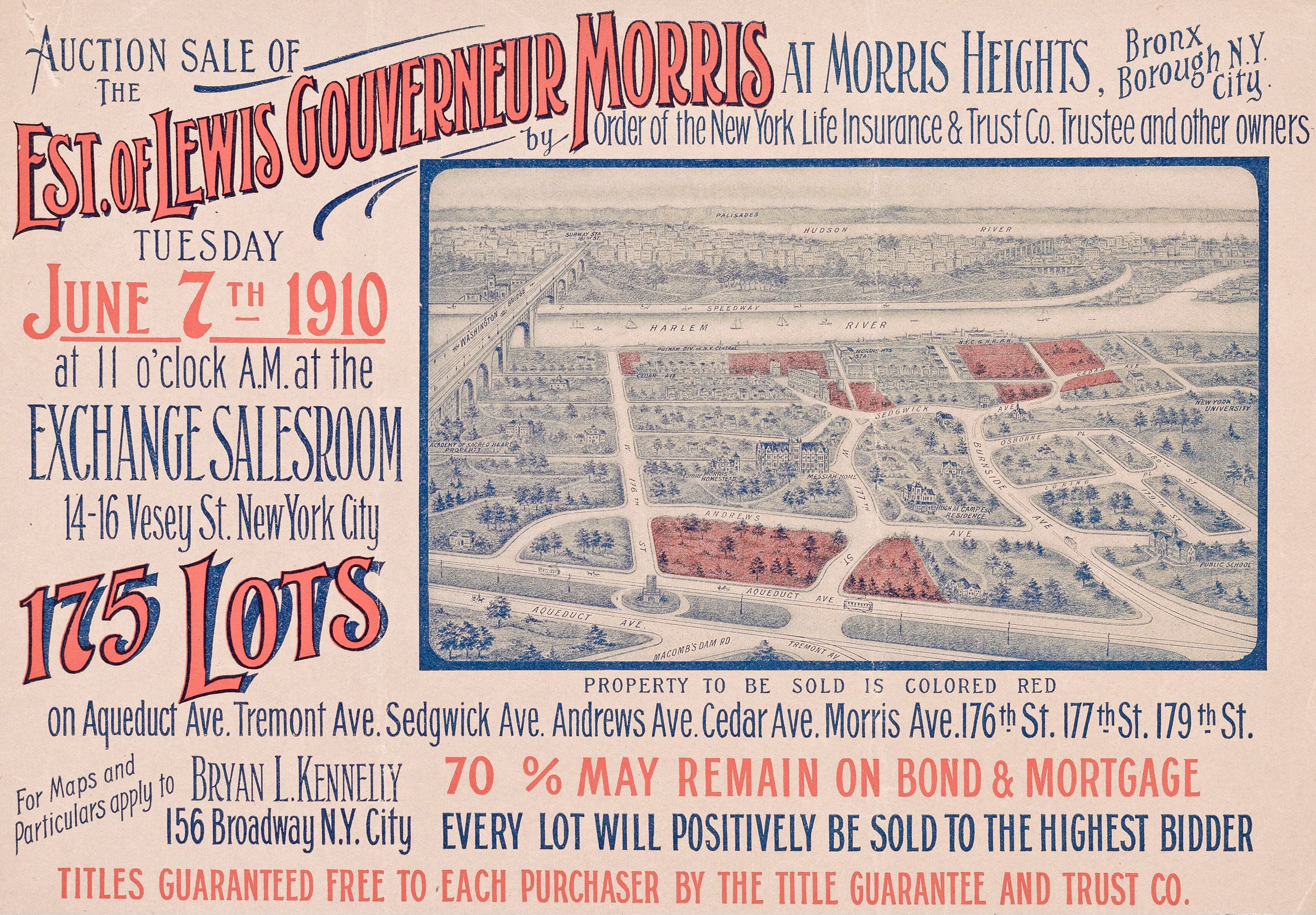
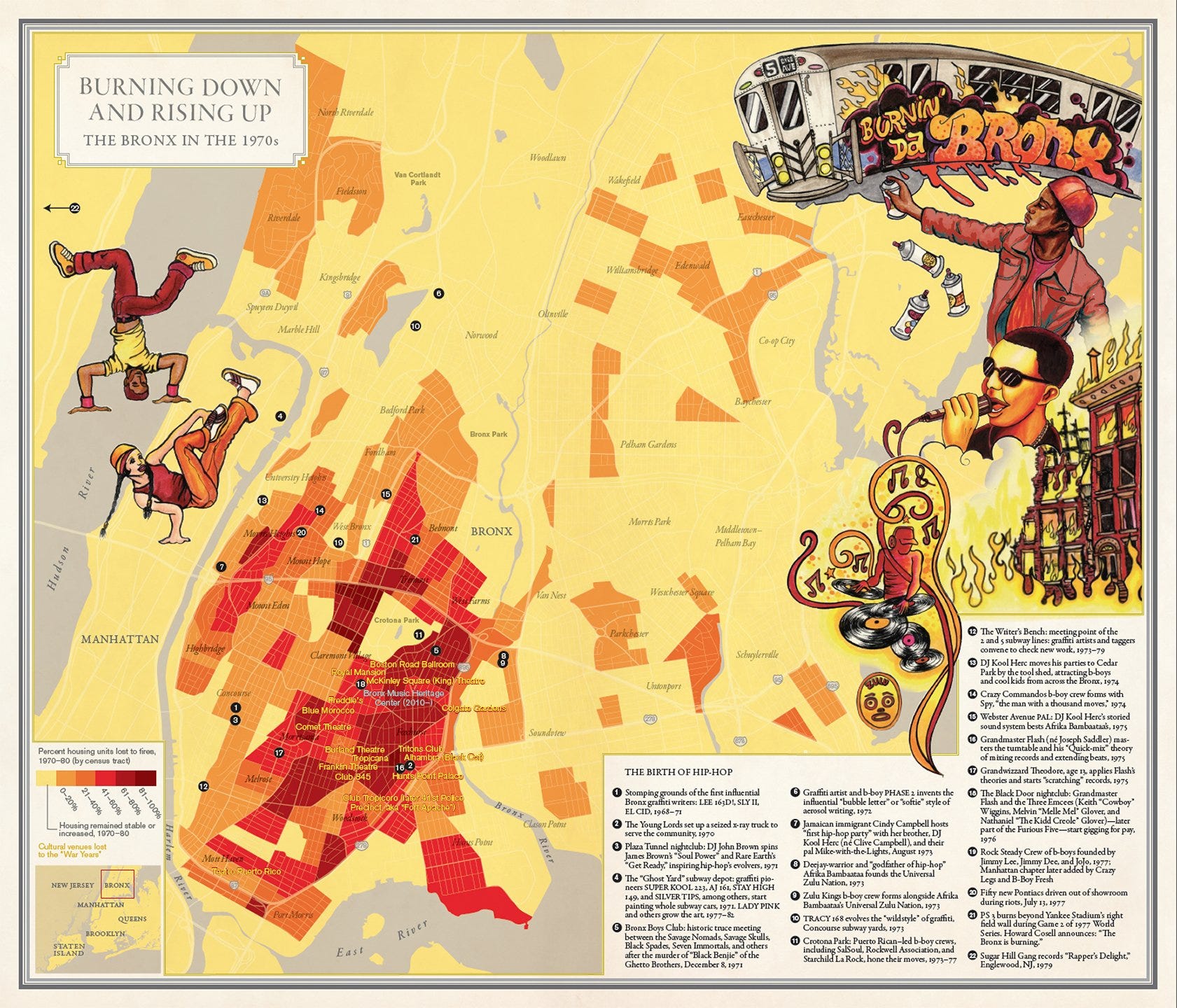
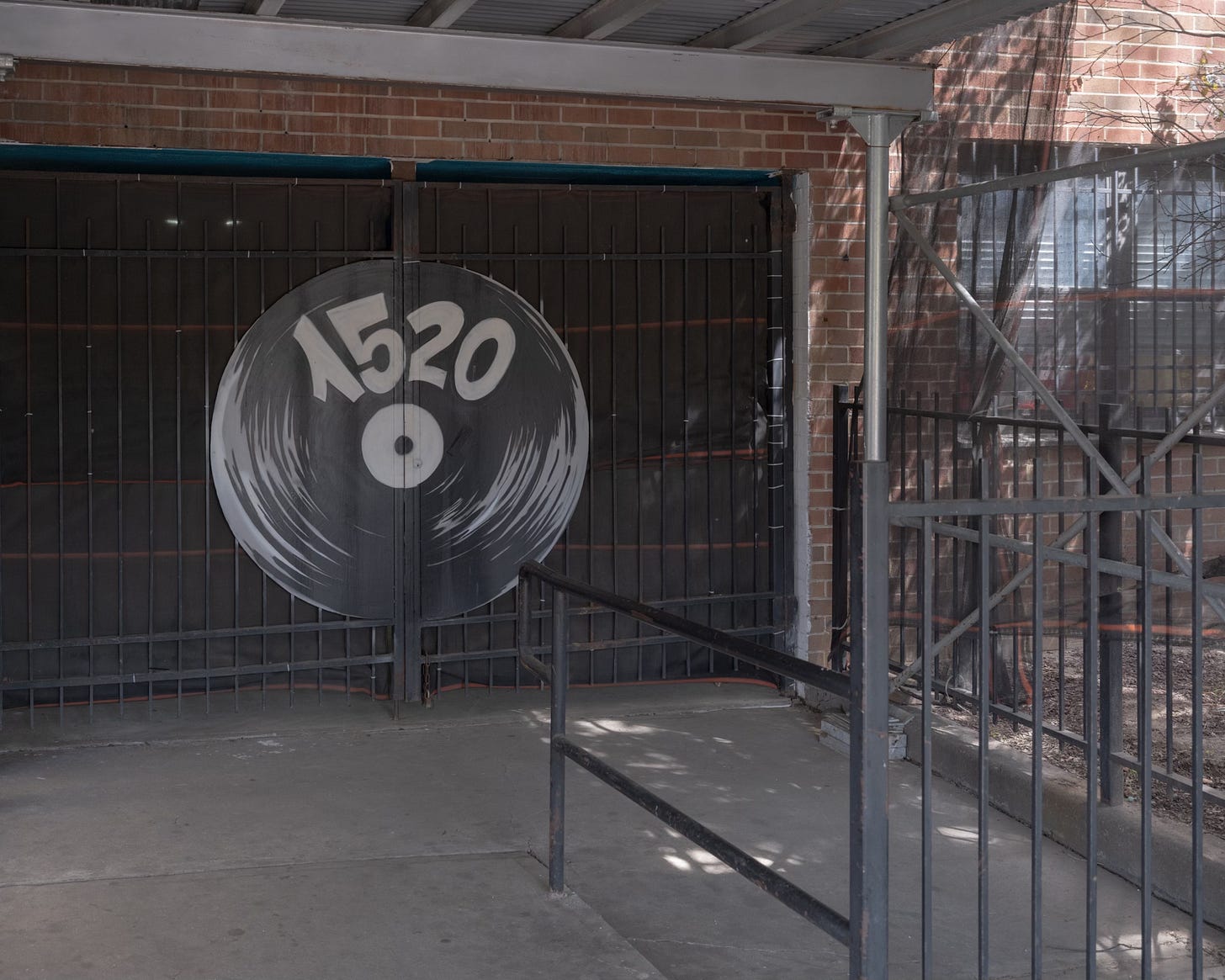
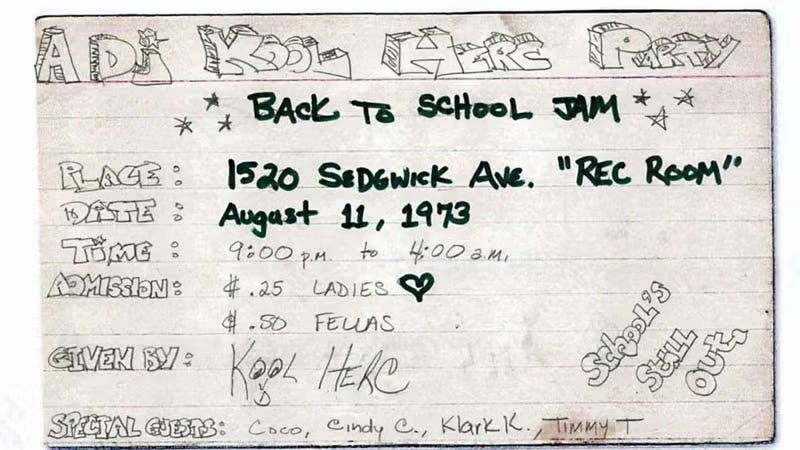
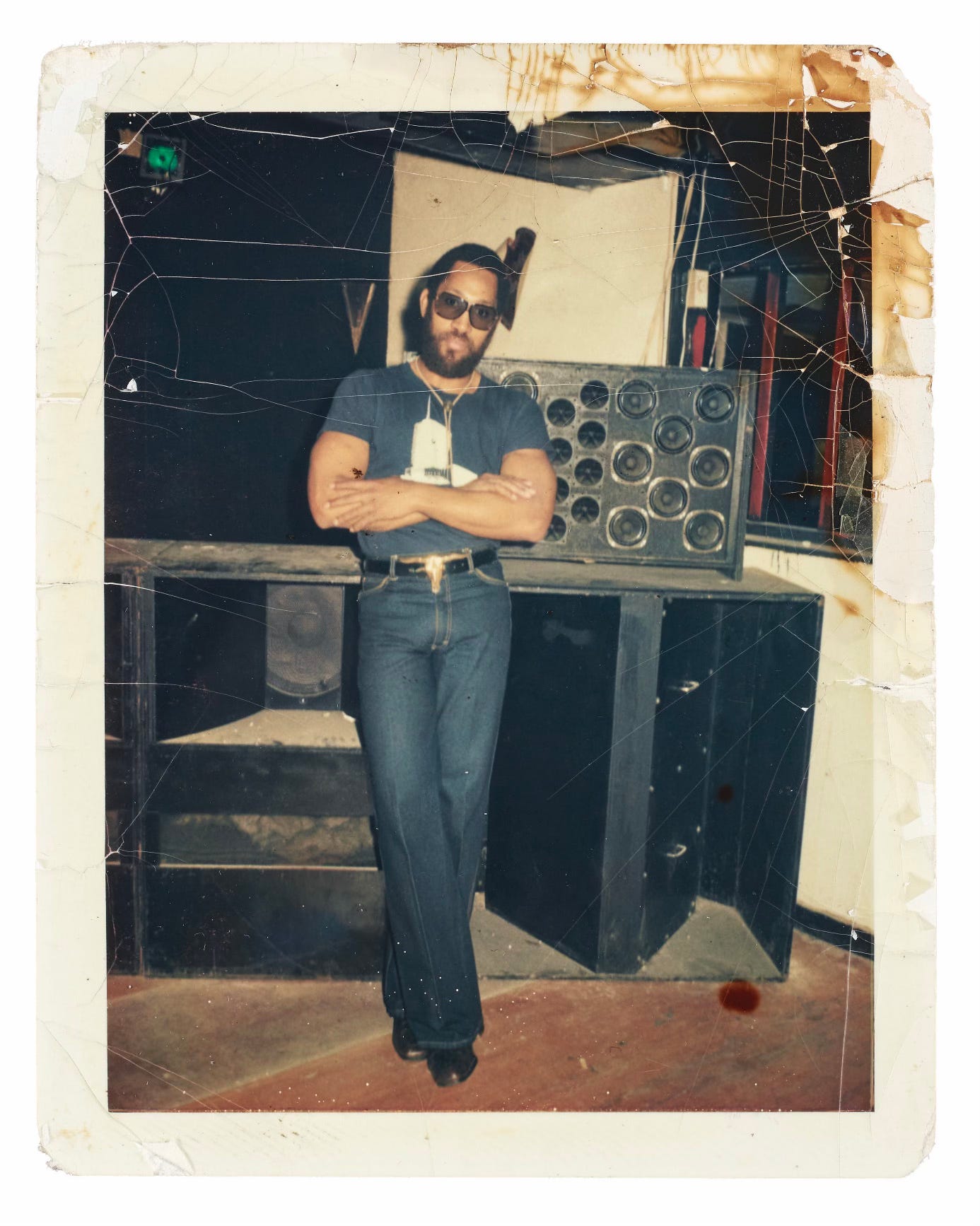
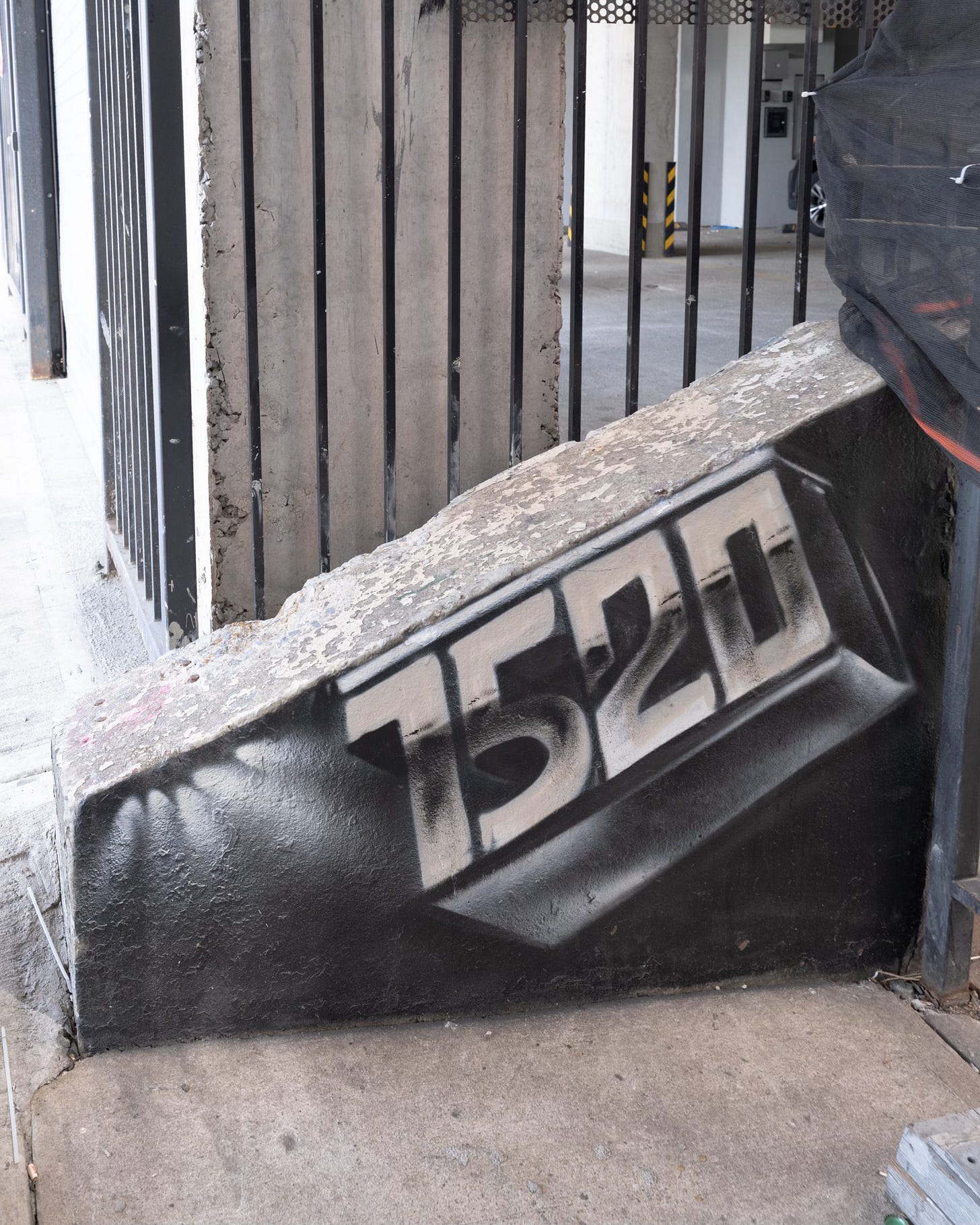
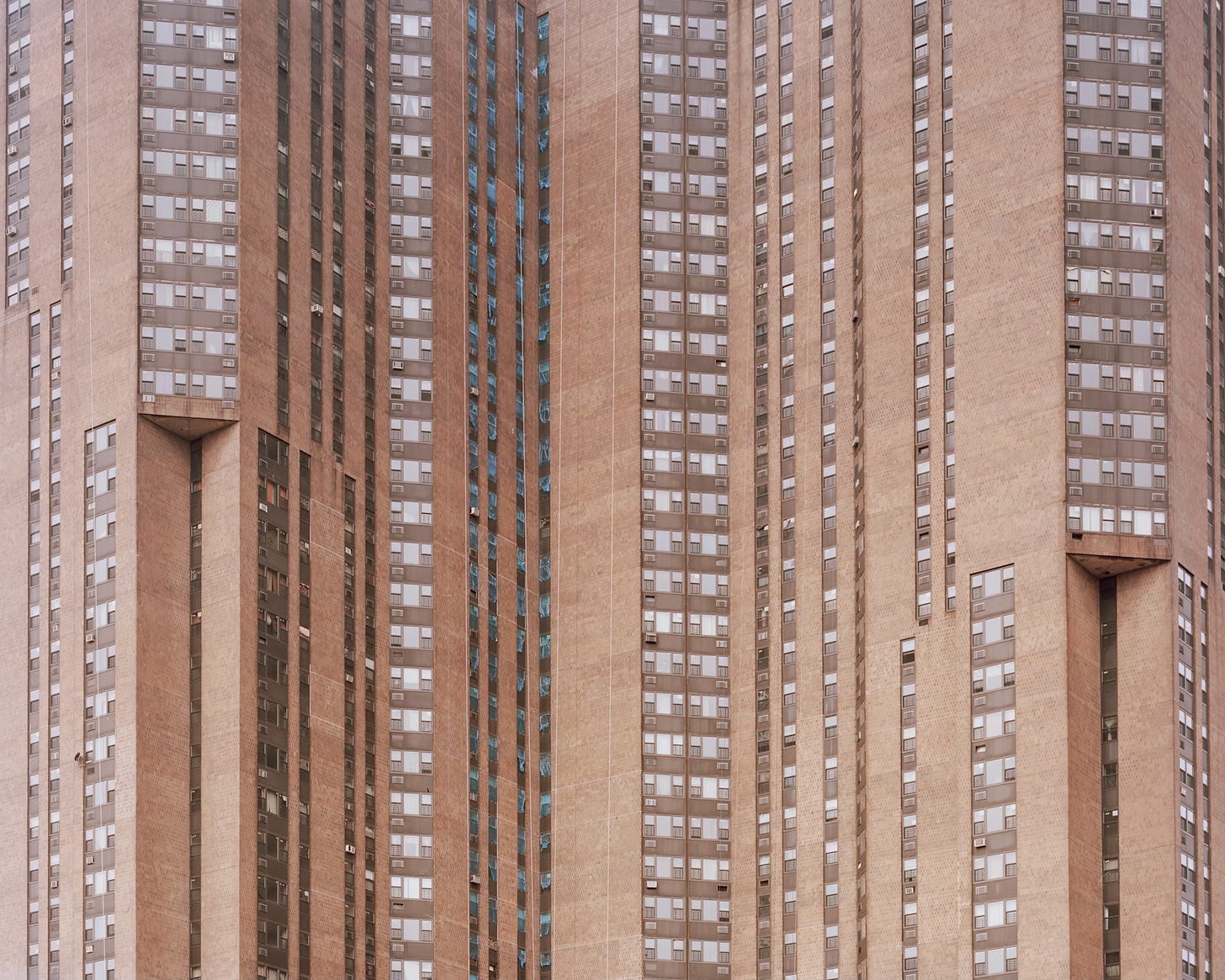
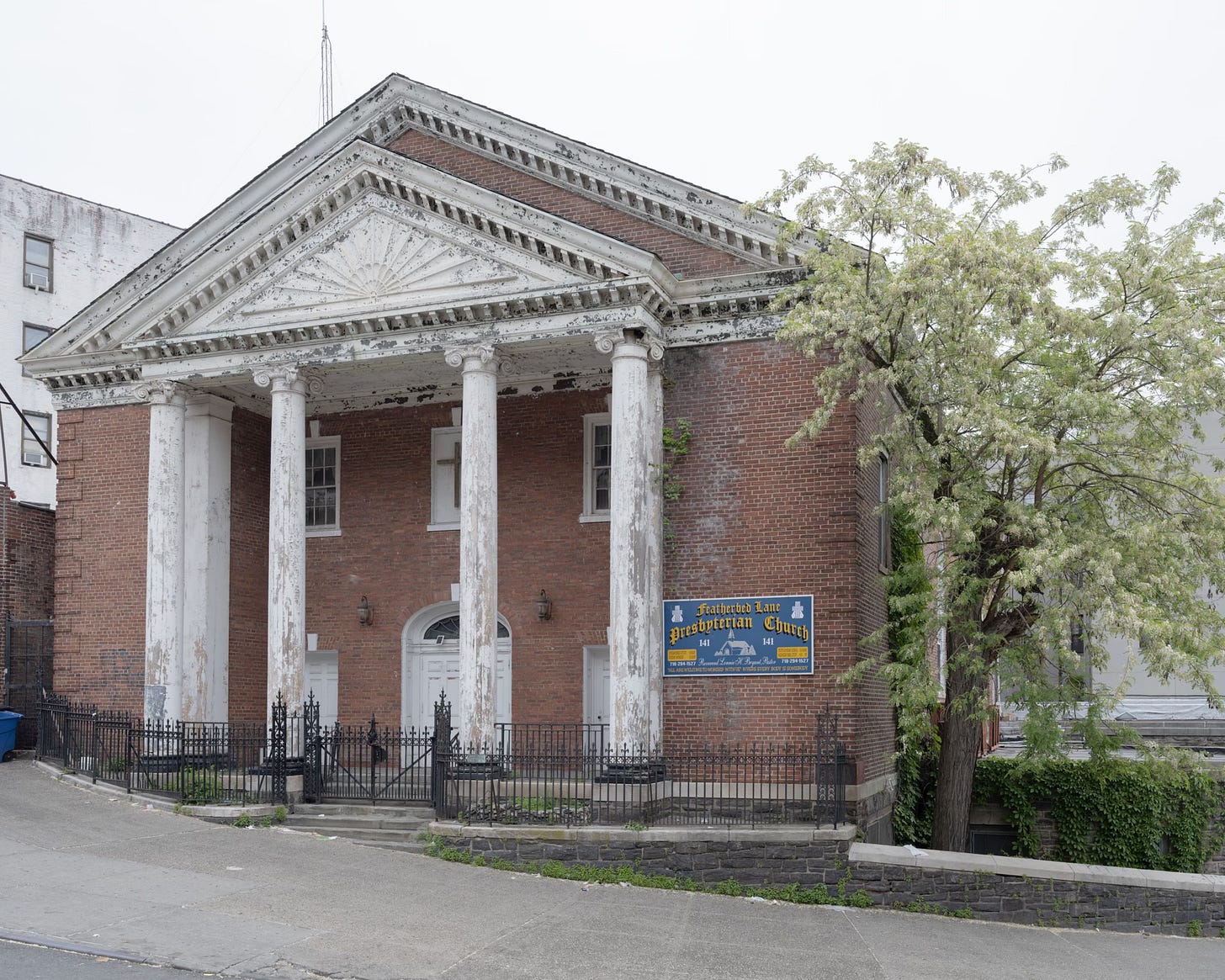
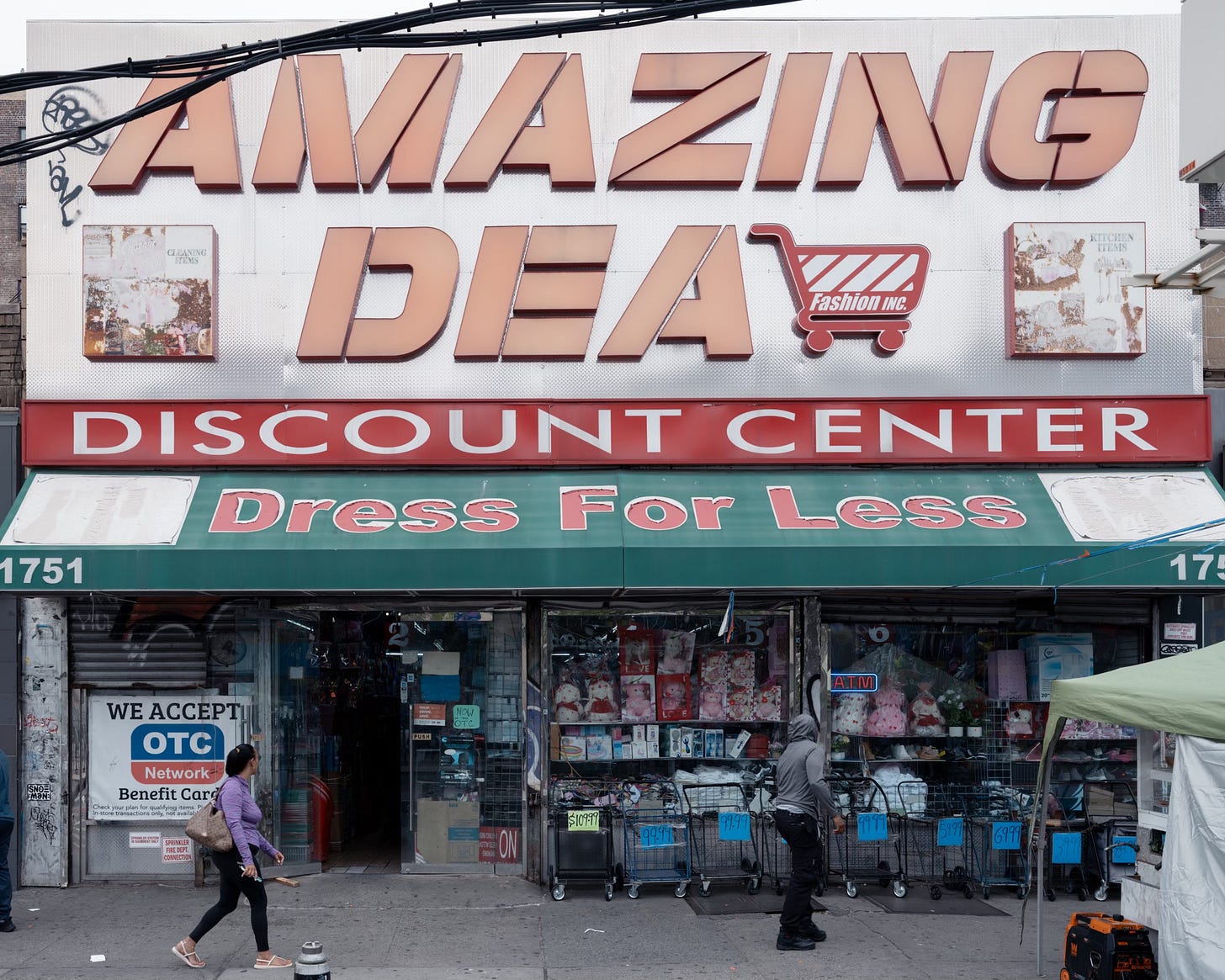
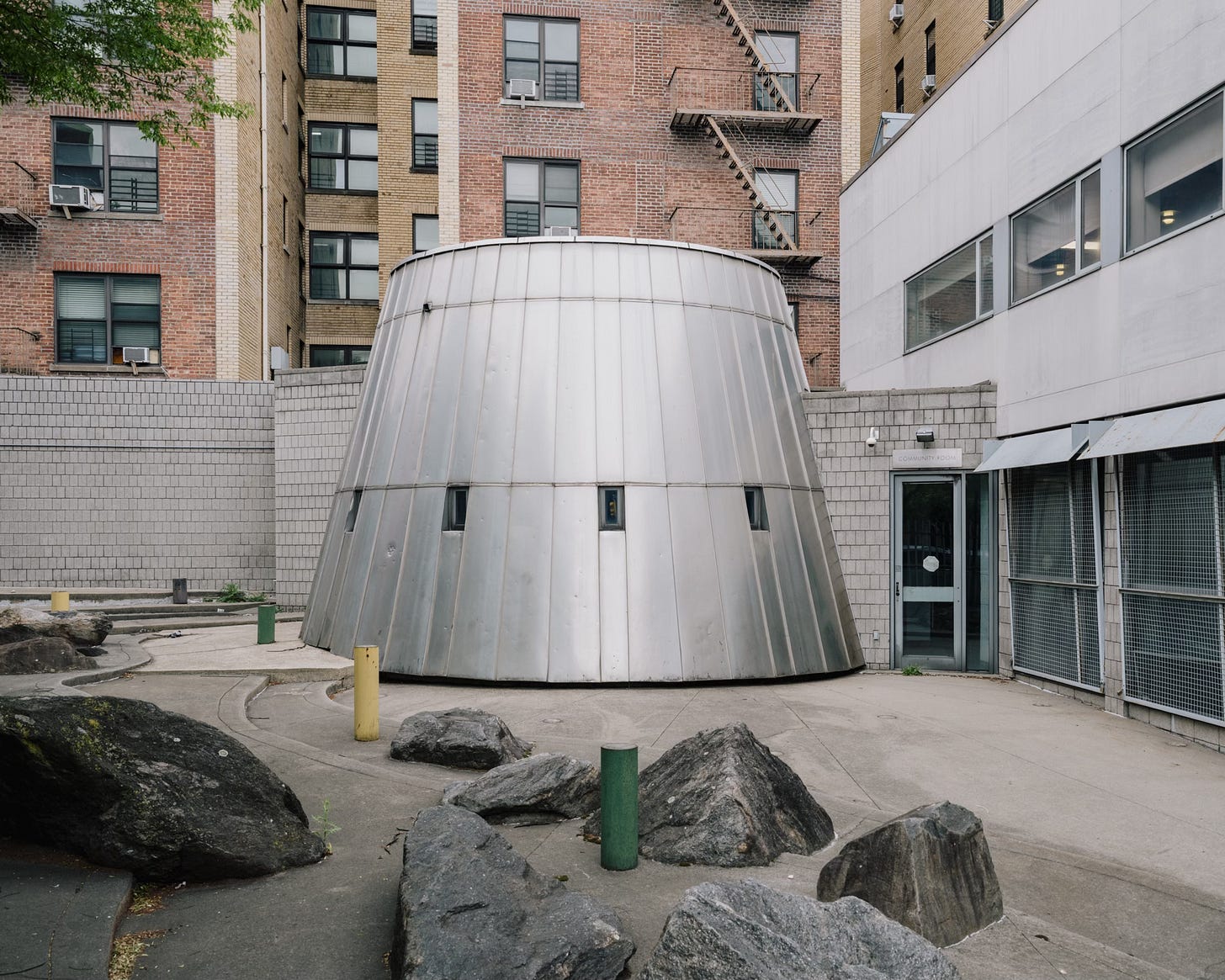
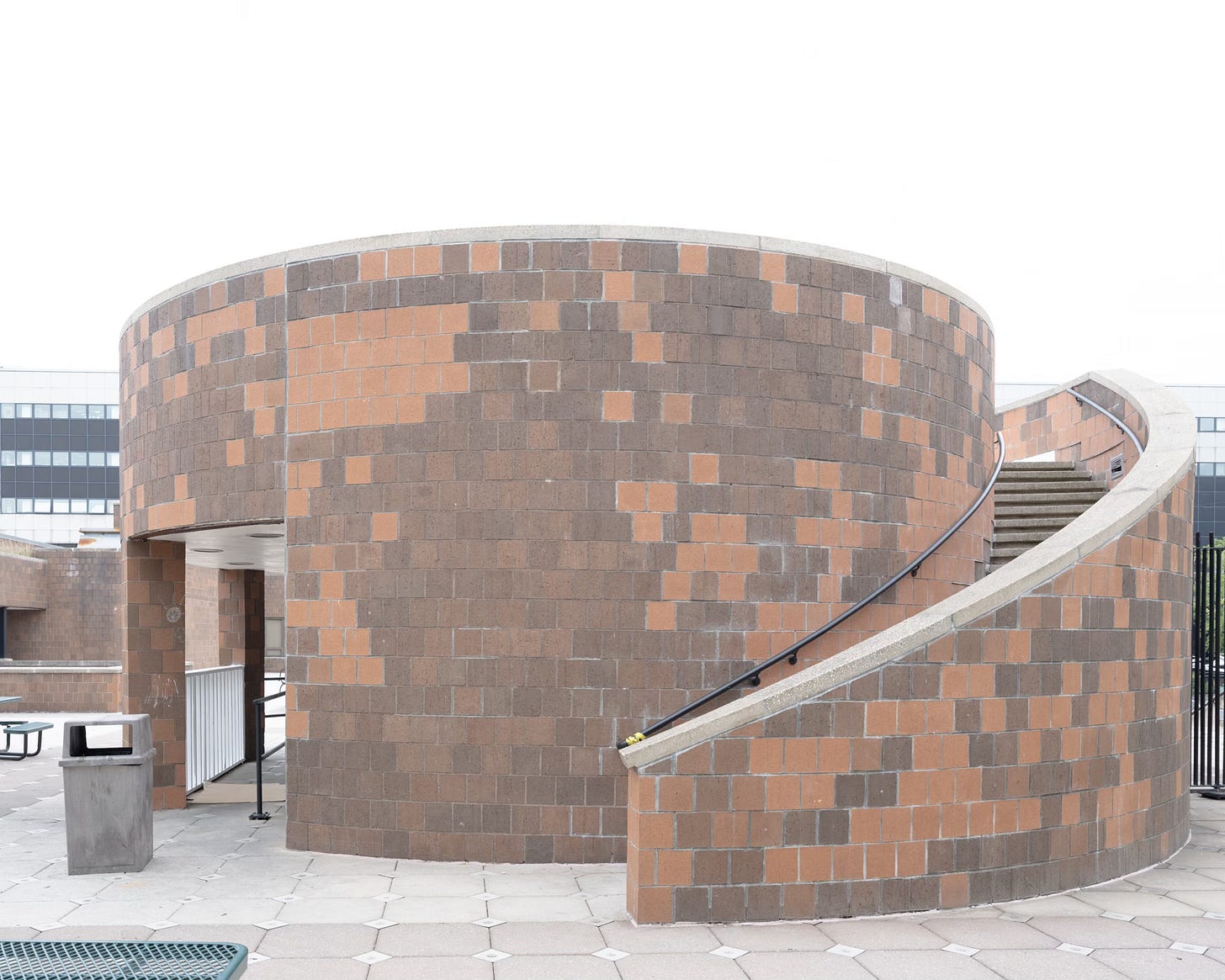
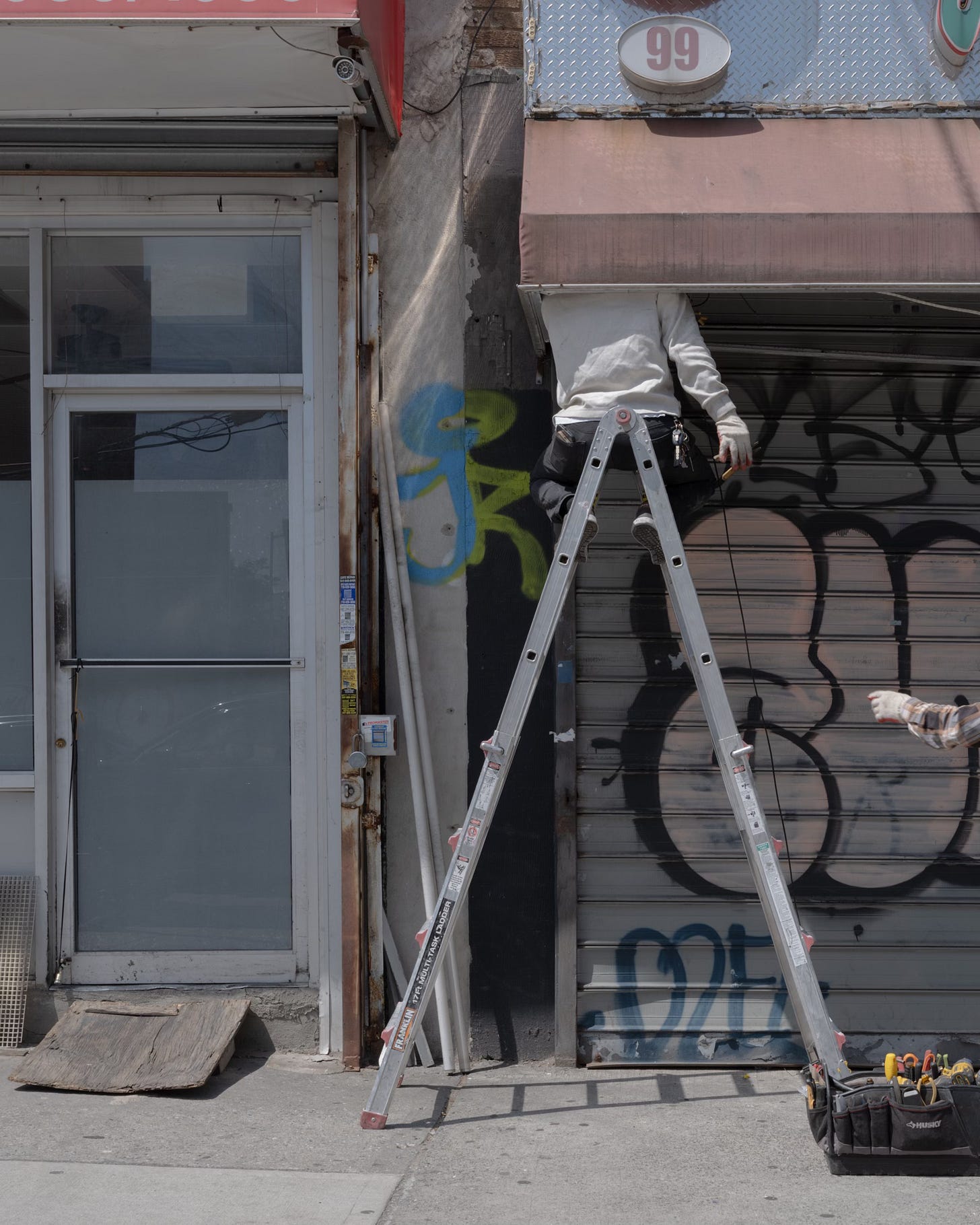

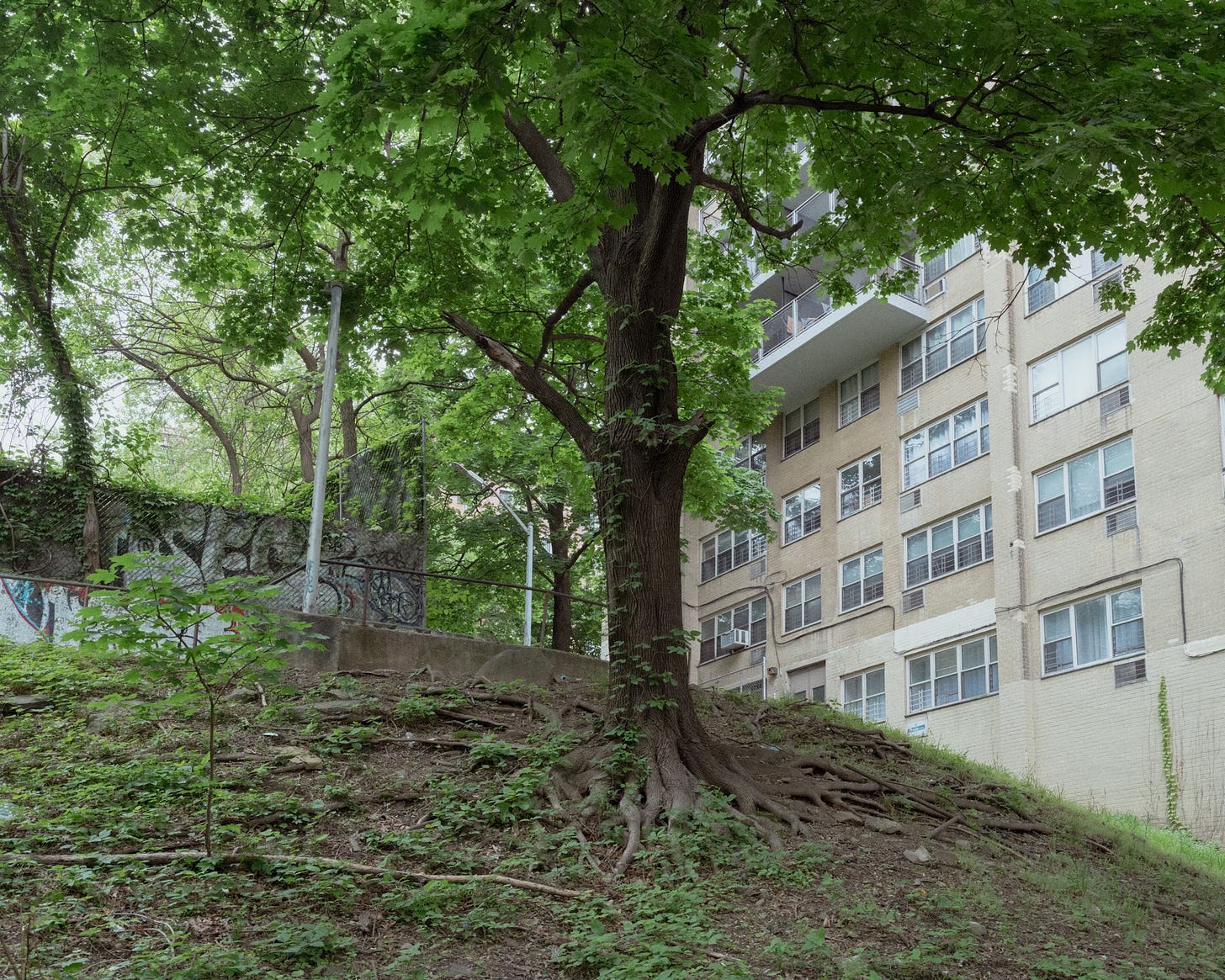
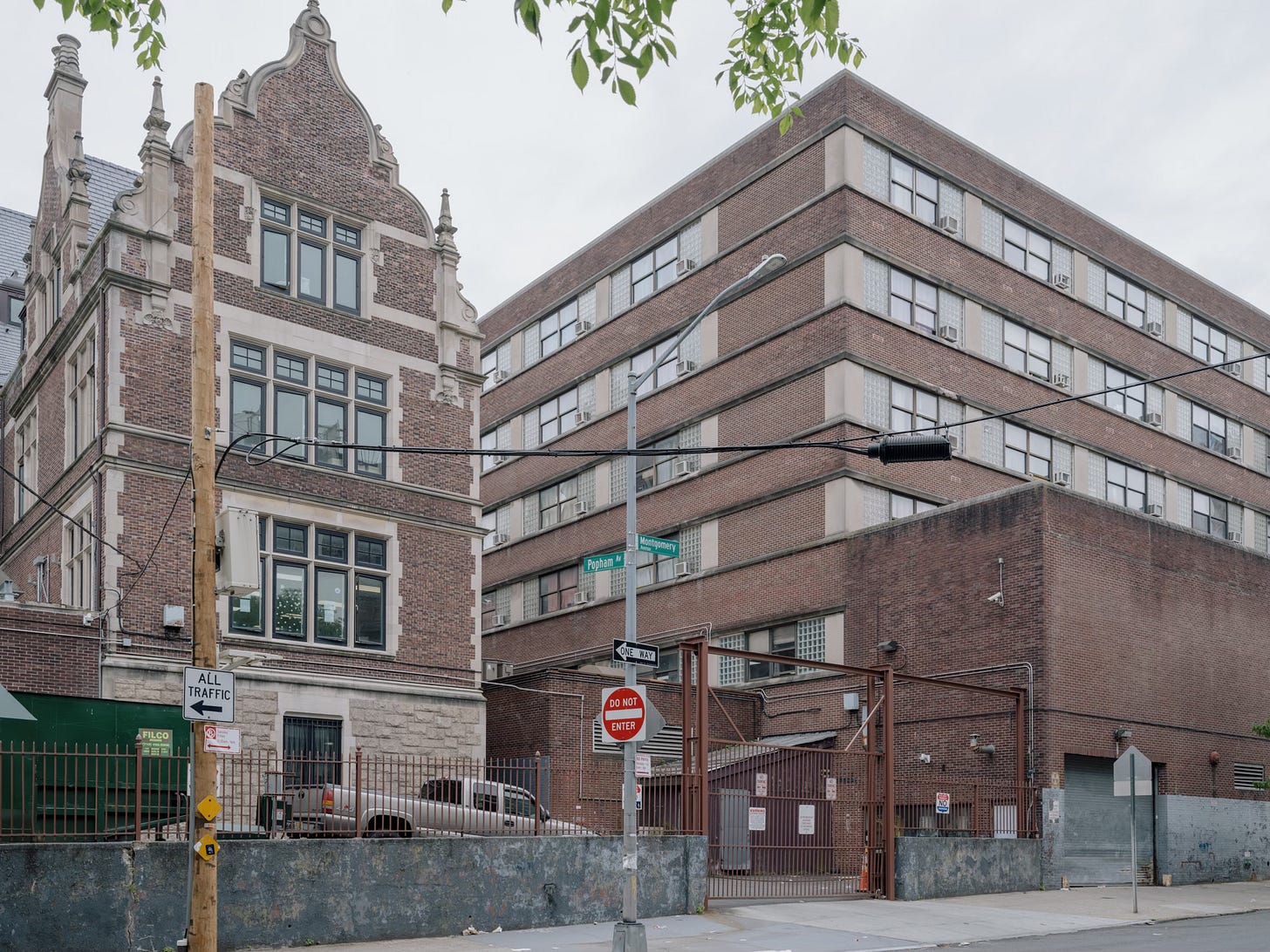


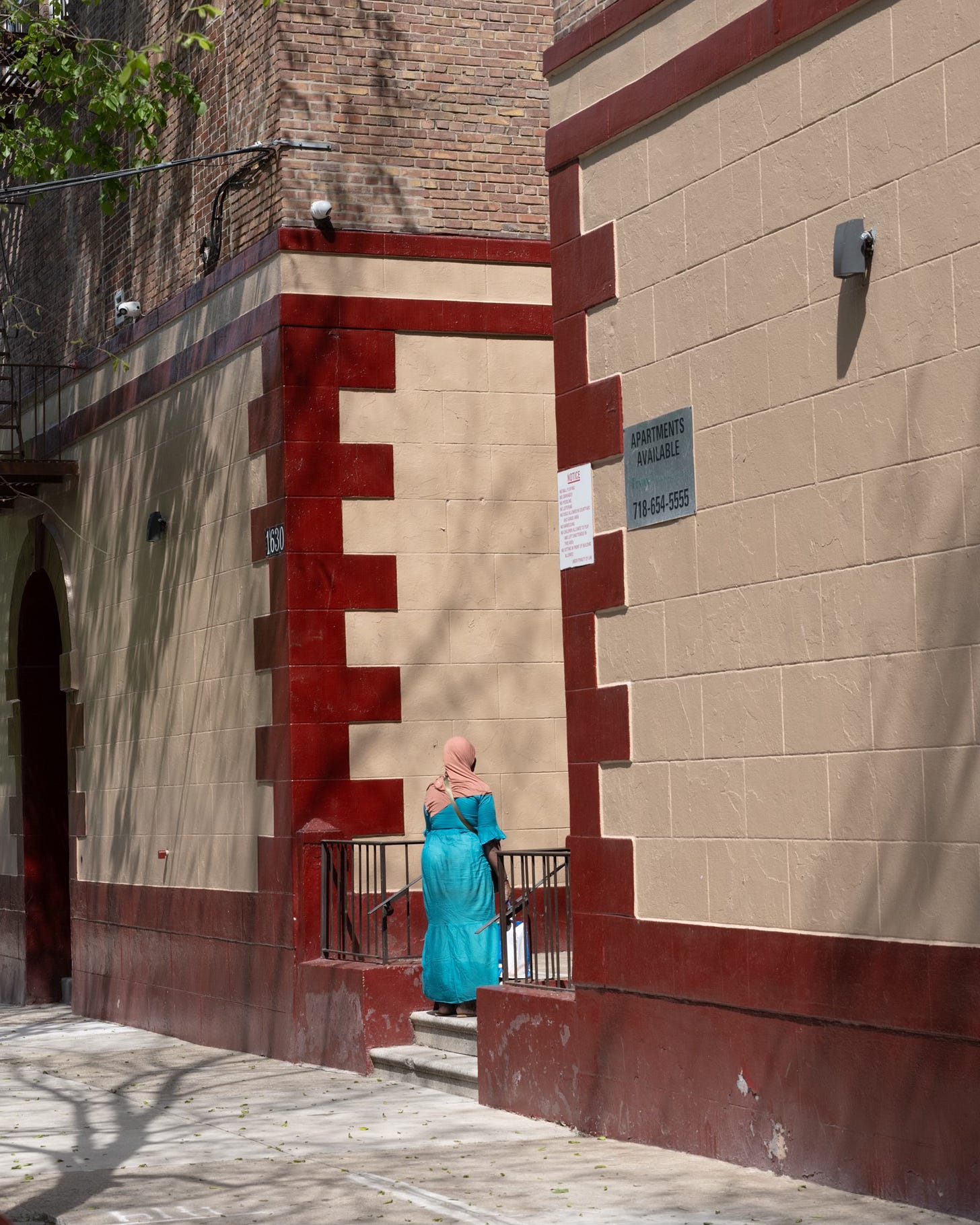


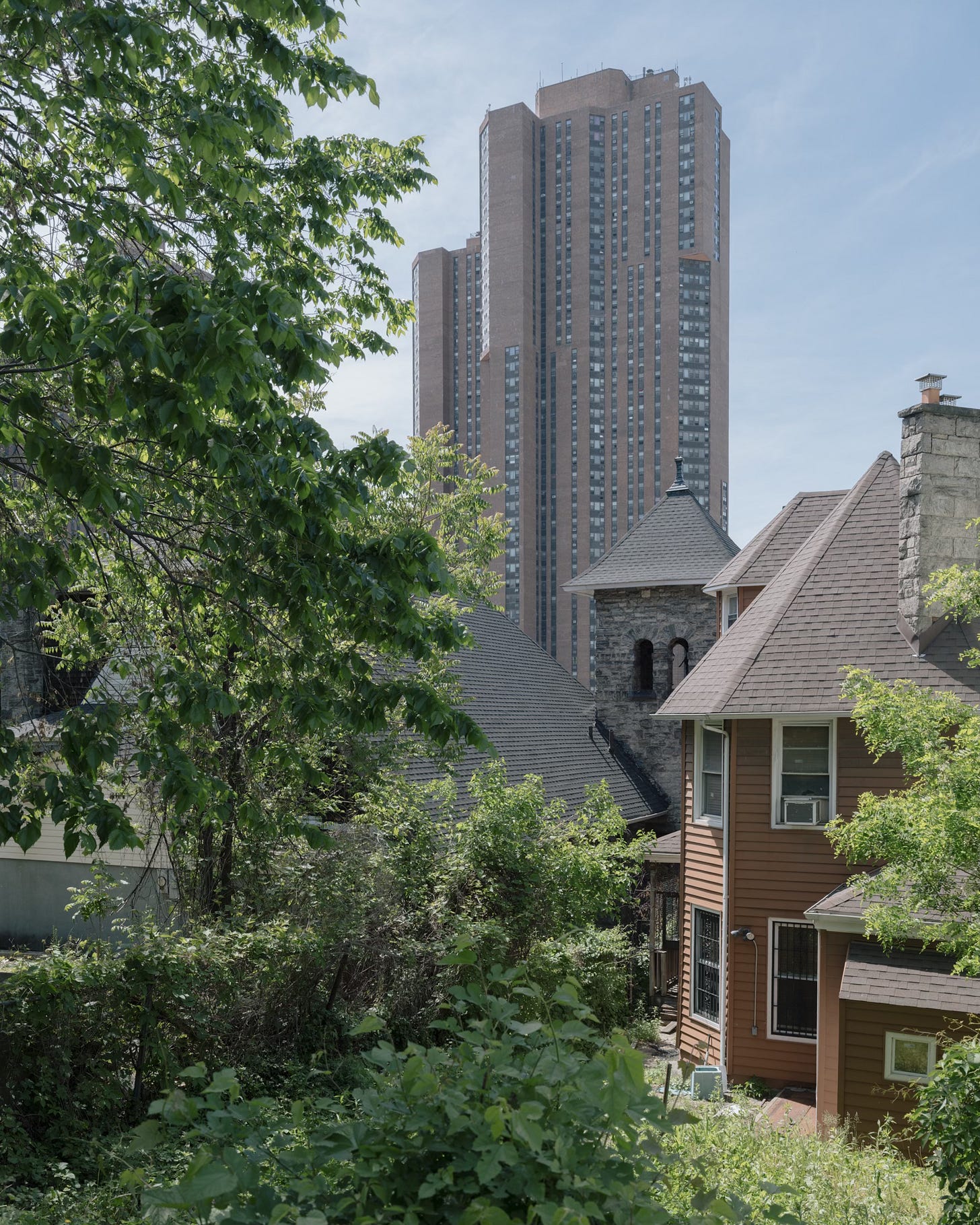
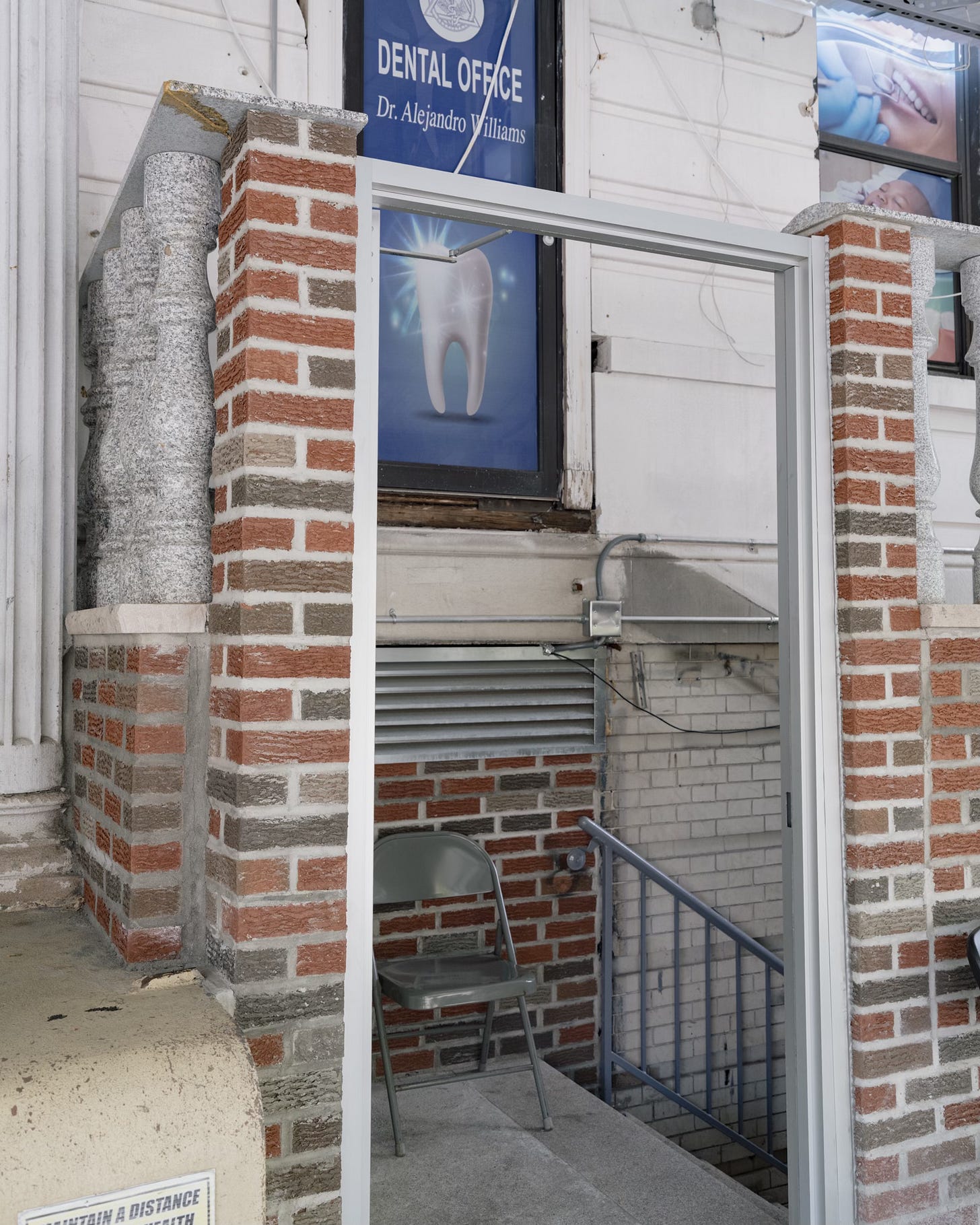
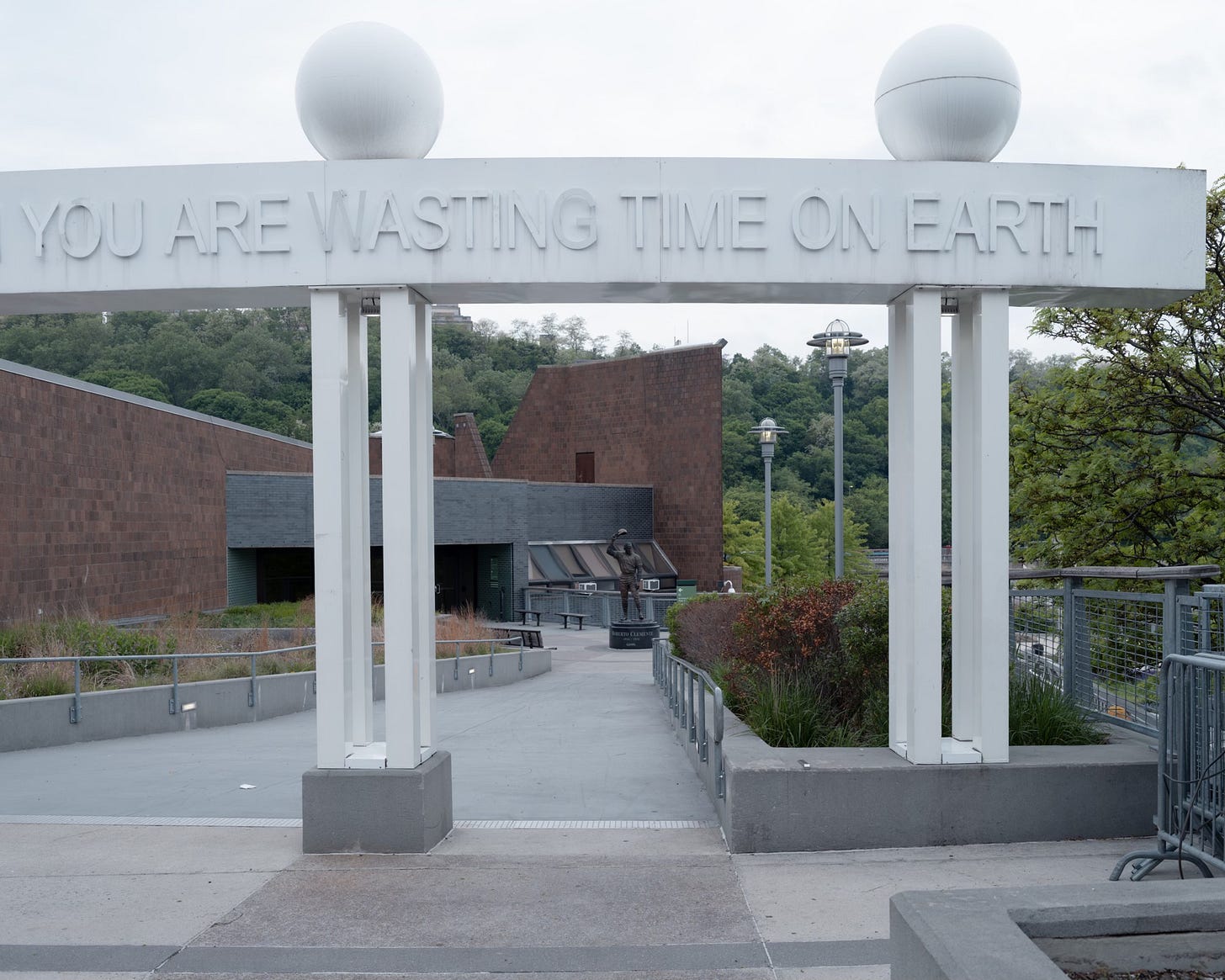



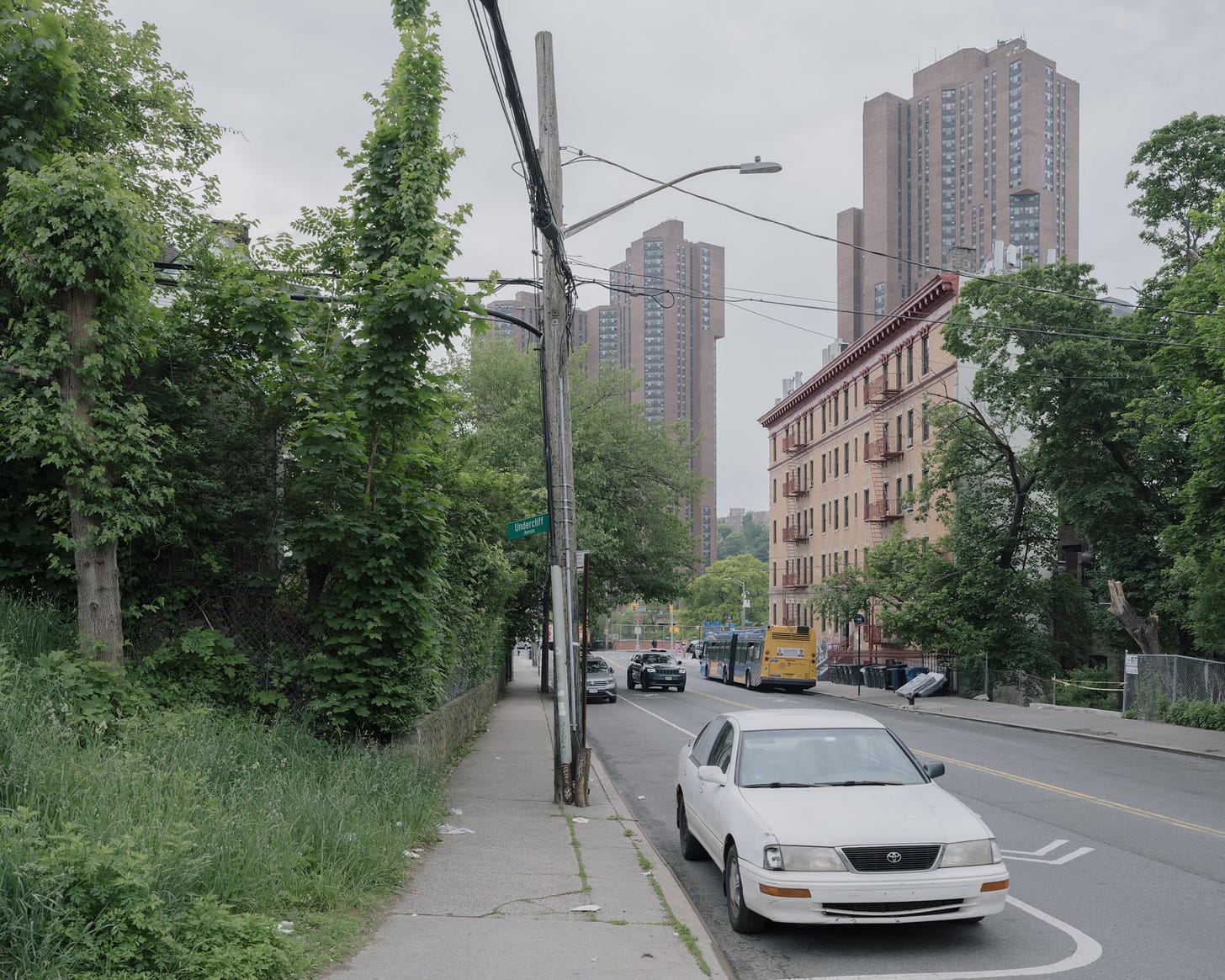
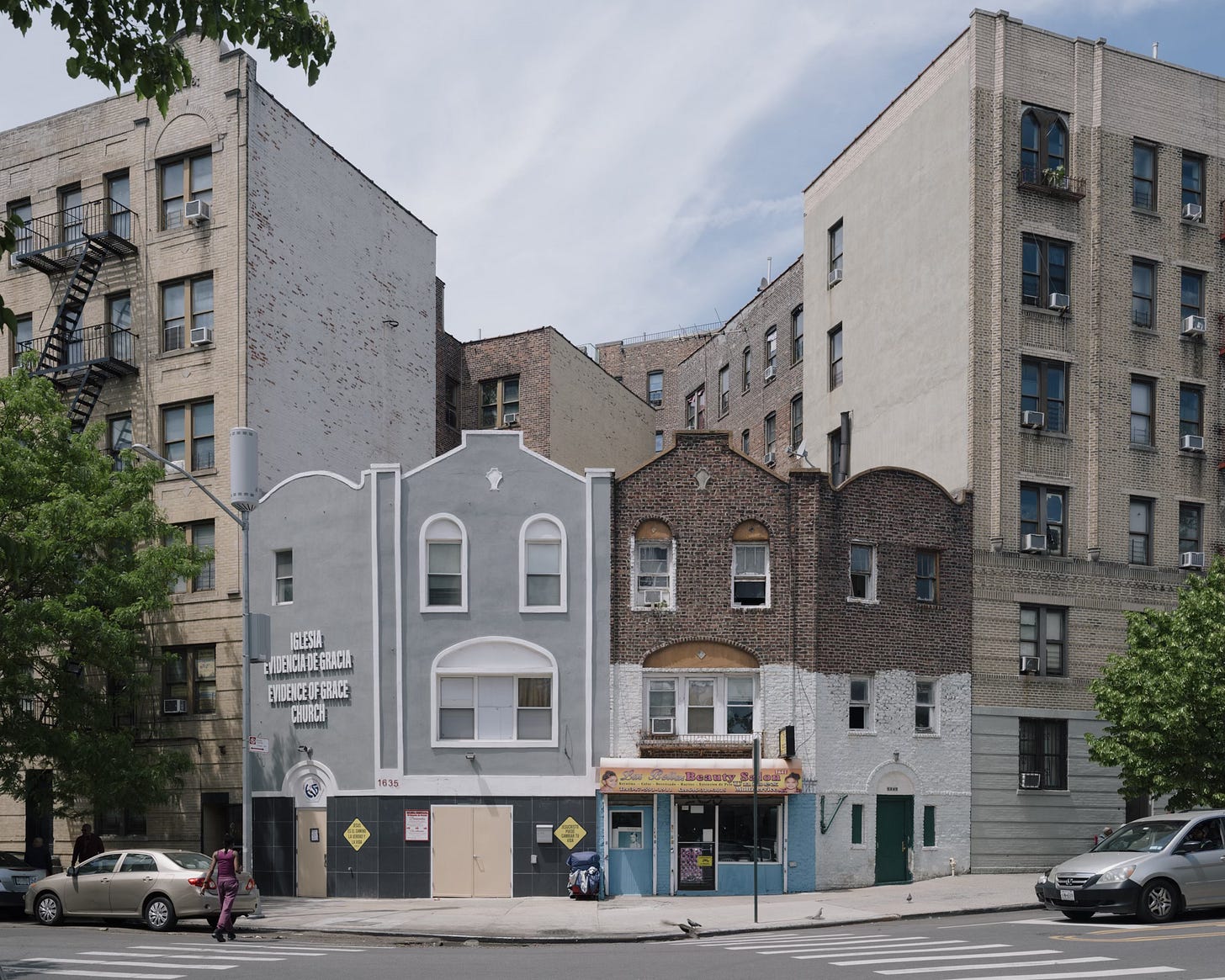
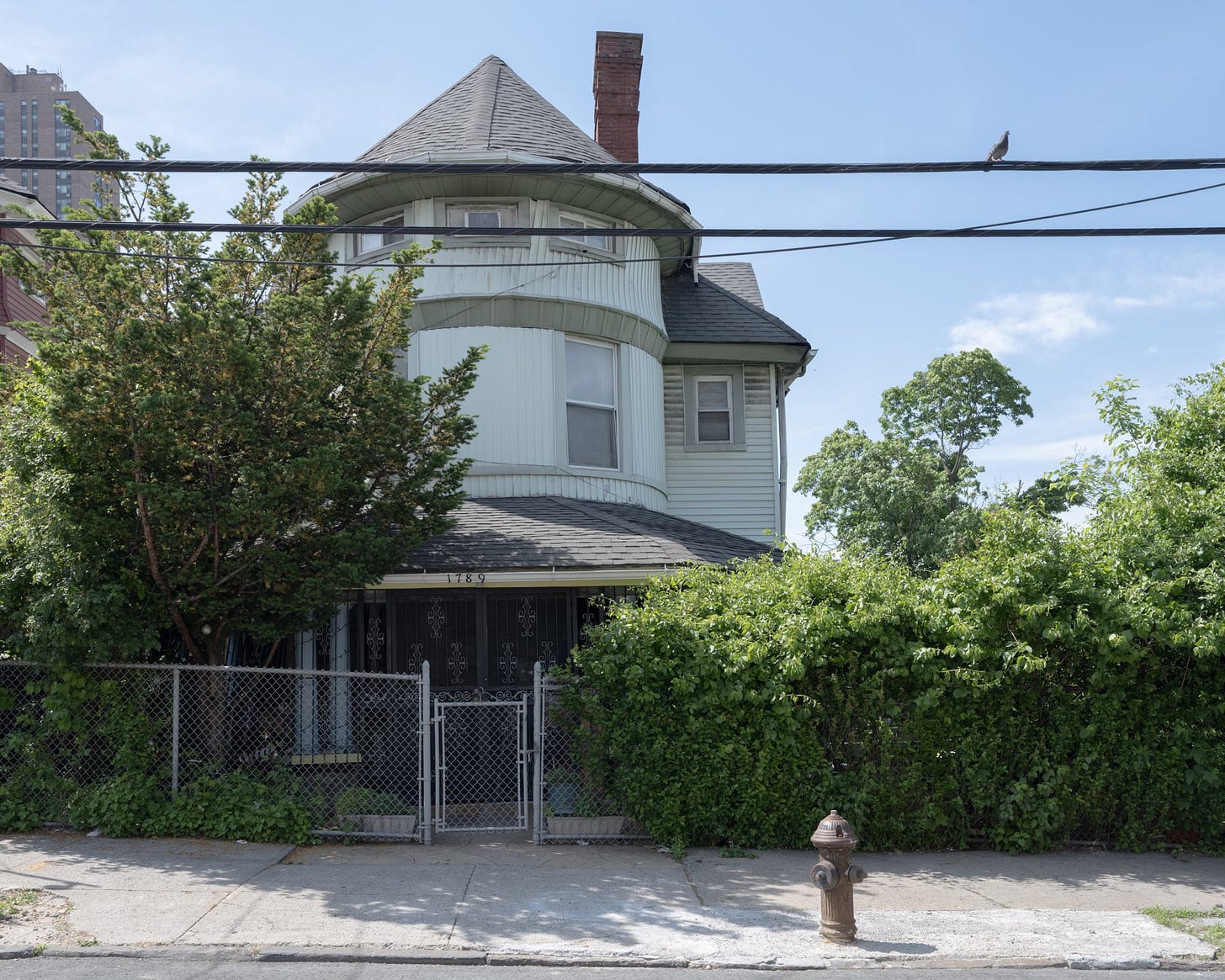
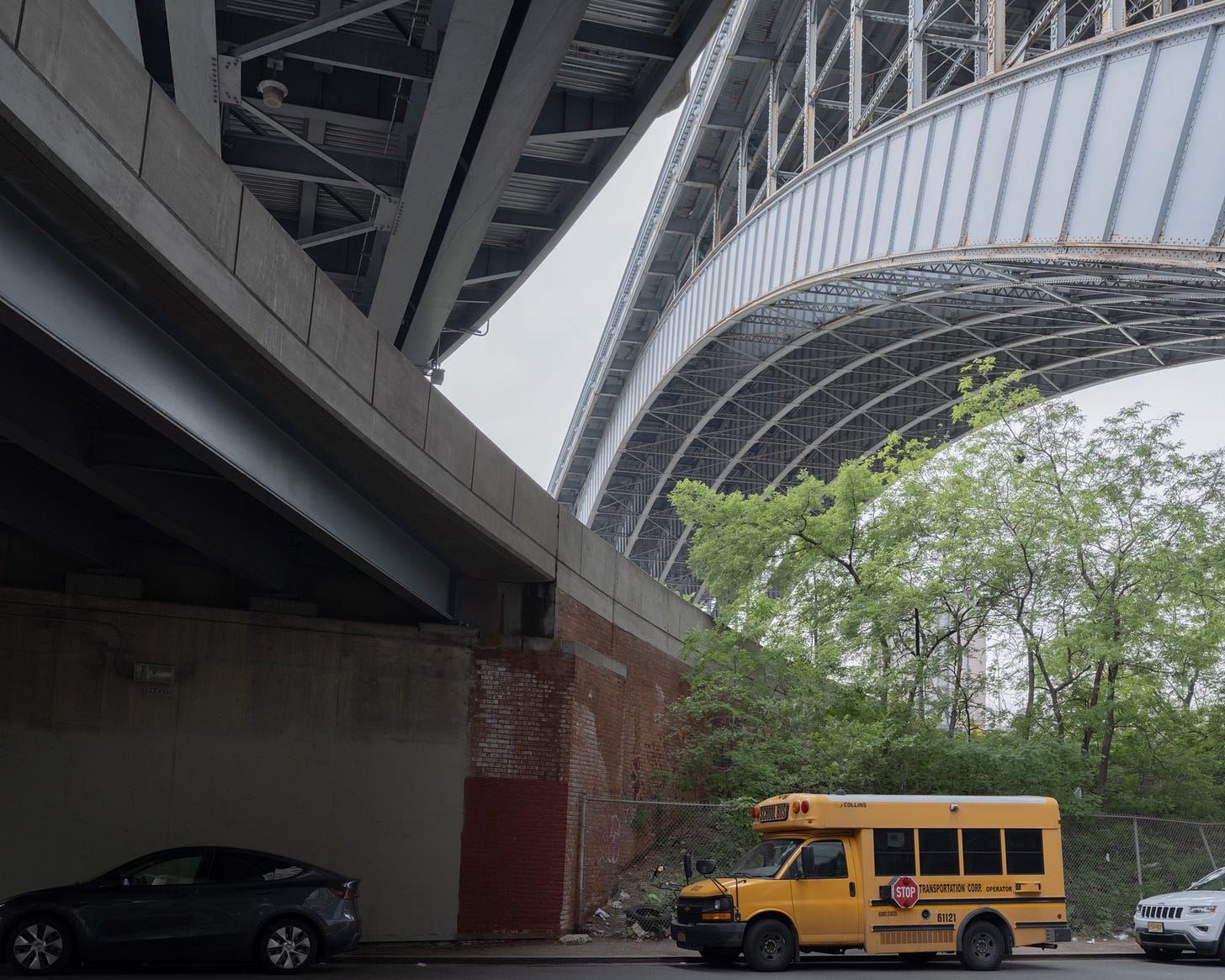


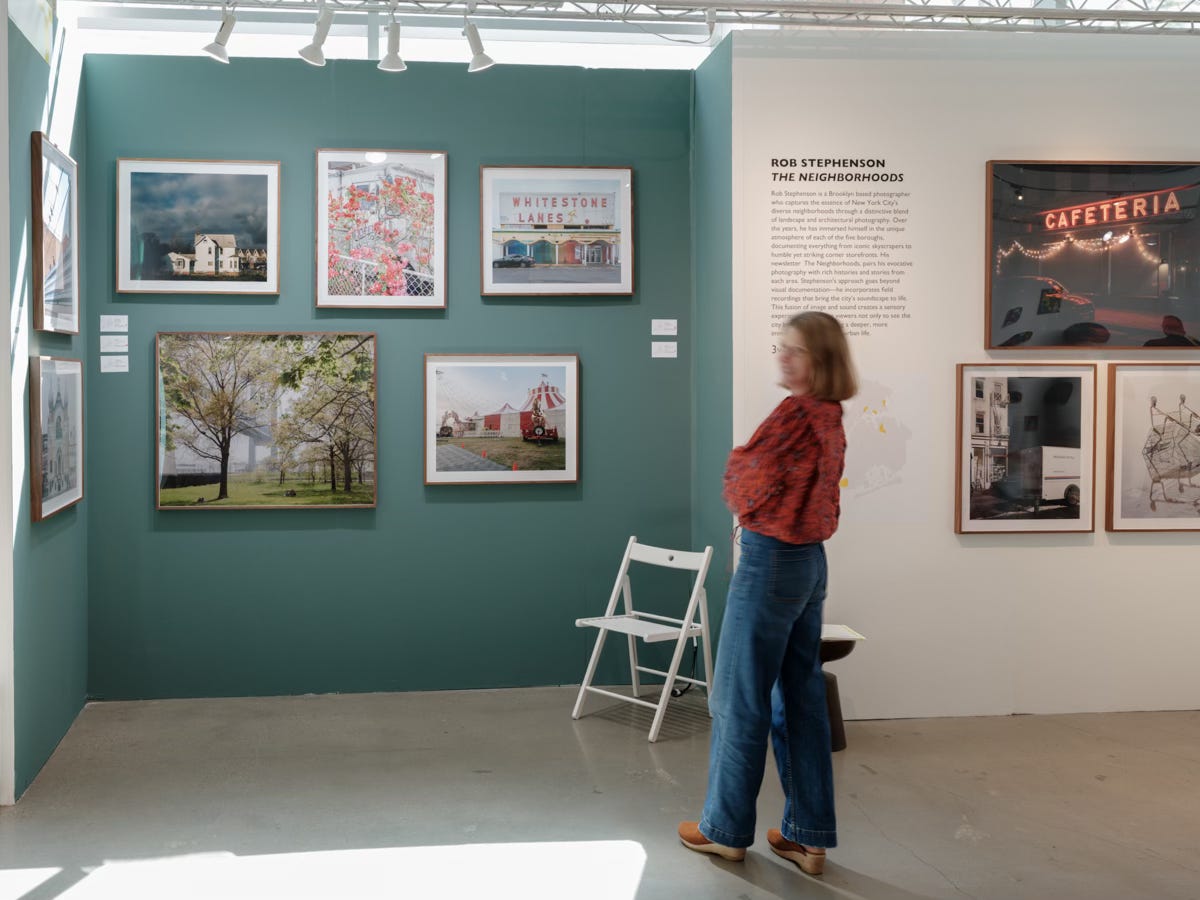
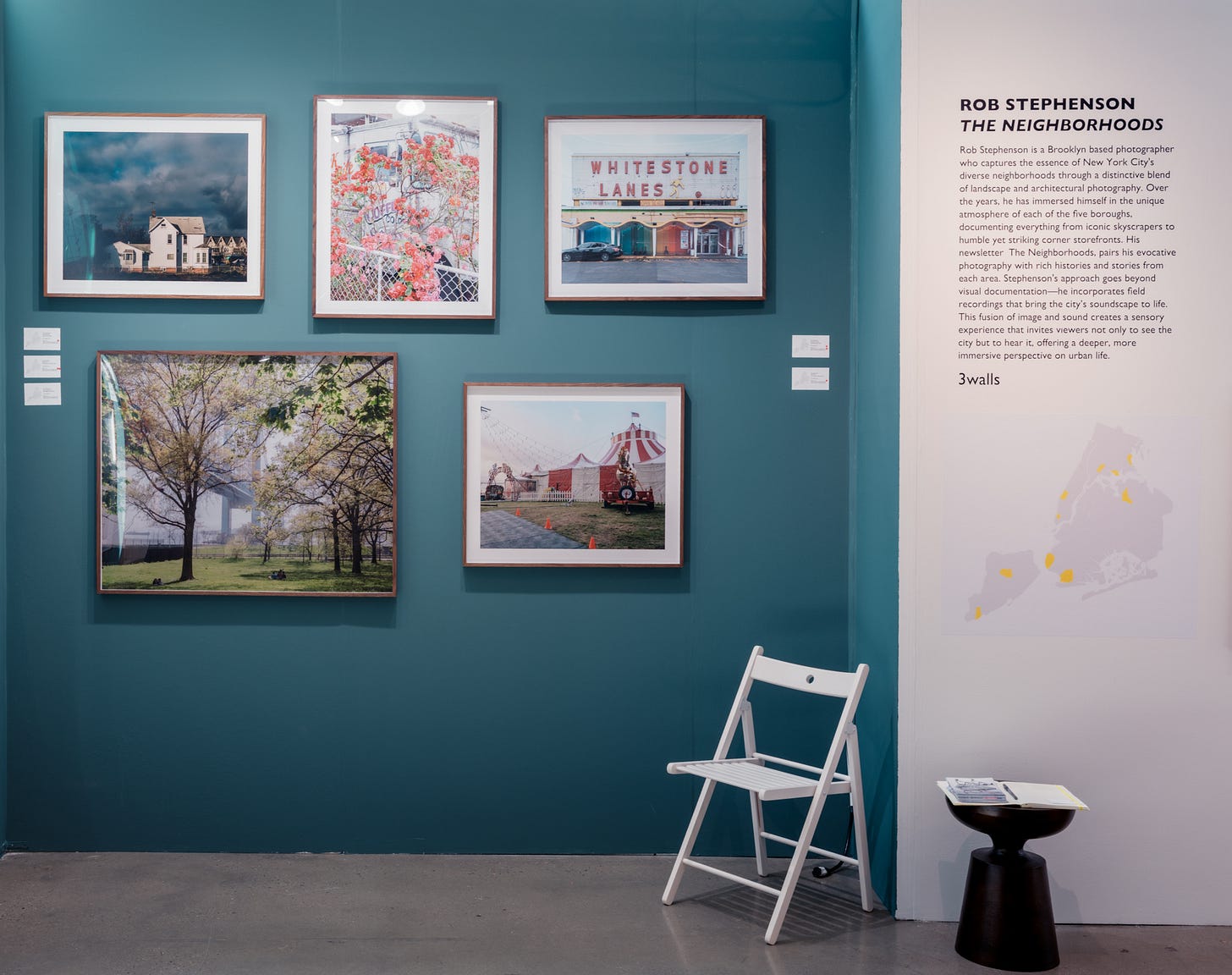

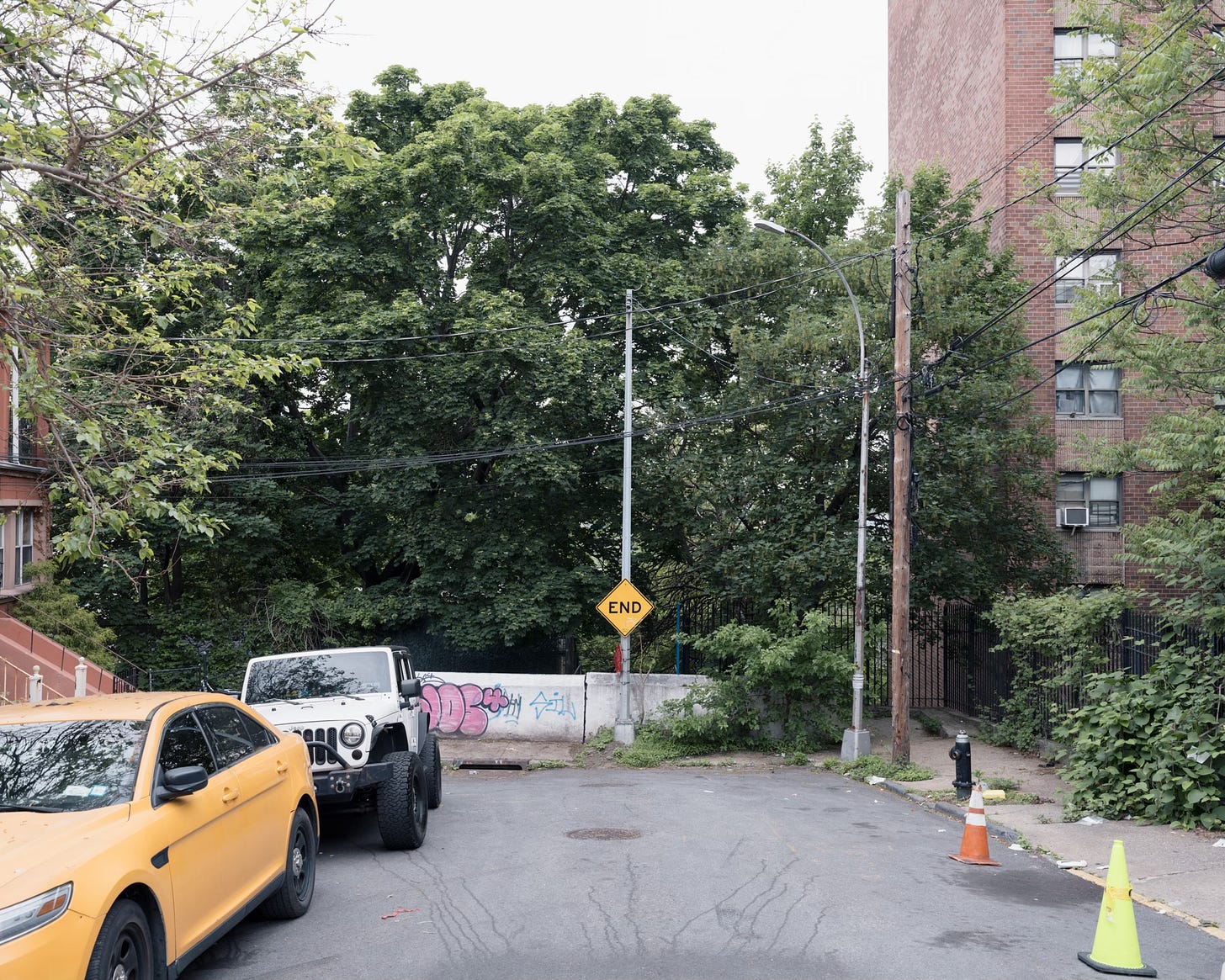
Pleased to see AC support can still in style ;)
This whole area seems extremely charming. Not sure why I feel that way. It's just...got a vibe.